
by wang, Simon | Jul 10, 2025 | Monascus Red Color
I’ve spent years working with natural colorants, but nothing tests their stability quite like India’s tropical heat—and Monascus Red is no exception.
Monascus Red stability in India’s hot climate depends on formulation techniques, packaging solutions, and application choices. To maintain its vibrant red color in extreme temperatures, proper pH control, moisture management, and synergistic ingredient pairing are essential for food, drink, and supplement industries.
In this post, I want to share everything I’ve learned from working with Indian food and supplement manufacturers—and how we’ve helped them succeed with Monascus Red, even under the sweltering sun.
What Makes Monascus Red Uniquely Sensitive to Heat?
I’ve seen Monascus Red hold strong in Japan’s humid summers, but India’s dry heat is a different beast.
Monascus Red is a natural pigment derived through fermentation, and like many biological materials, it’s heat-sensitive. High temperatures can degrade its structure, leading to faded color, off-odors, or reduced shelf life.

Why temperature plays a critical role
Monascus Red is produced via the fermentation of Monascus purpureus, creating a set of pigments known as monascorubrin, rubropunctatin, and their derivatives. These pigments are stable in moderately acidic conditions but start breaking down rapidly when exposed to:
- Heat above 40°C
- Sunlight (UV exposure)
- Moisture and oxygen
And let’s face it—those are all common in the Indian supply chain. From trucks to store shelves without refrigeration, it’s a real challenge.
Key vulnerabilities of Monascus Red
| Factor | Effect on Stability |
|---|
| Heat (40°C+) | Causes pigment degradation |
| pH > 7 | Fades color rapidly |
| Light exposure | Breaks pigment molecules |
| Oxidation | Leads to color dulling |
| High moisture | Encourages microbial growth |
Understanding these vulnerabilities is the first step to overcoming them.
How Do Indian Food Manufacturers Manage Heat Stability?
I’ve worked closely with Indian snack and sauce makers—many use open-air drying or ambient packing, which complicates things.
Indian manufacturers combat heat instability by using encapsulation, pH buffering agents, and protective packaging to prolong Monascus Red’s shelf life. Formulation timing and processing temperature also play major roles.
What strategies work best in Indian conditions?
Let me tell you about a client in Gujarat—he was producing vibrant red masala-coated snacks, but the red faded to brown within weeks in storage. Together, we:
Result? Vibrancy maintained for 6 months under normal warehousing.
Technical insights that make a difference
| Strategy | Application | Result |
|---|
| Add during cooling stage | After frying or pasteurizing | Reduces heat exposure |
| Use encapsulated pigment | For seasoning powders, tablets | Prevents early degradation |
| Adjust pH to 5–6 | In sauces or beverages | Optimal pigment stability |
| Use UV-blocking packaging | Bottles, sachets, films | Protects from sunlight |
| Blend with antioxidants | Like ascorbic acid or rosemary | Slows oxidative breakdown |
These are simple tweaks, but when done right, they protect your brand’s visual identity.
Can Monascus Red Work in Indian Beverages?
Drinks are tricky—especially shelf-stable ones that sit in hot warehouses.
In Indian beverages, Monascus Red must be carefully pH-balanced and protected from light. It performs best in acidic drinks like kombucha, health tonics, and fruit-based beverages stored in opaque bottles.

A real case from Kerala
A startup client making fermented ginger drinks struggled with color fade. We reviewed their formula—it was pH 4.8 (great), but they used clear PET bottles and pasteurized at 90°C.
We recommended:
- Switching to amber glass
- Pasteurizing below 70°C
- Using 1% lemon juice as an extra acidifier
Now? The drinks look as vibrant as hibiscus and fly off shelves at local organic stores.
What to know before adding Monascus Red to beverages
| Requirement | Why it matters |
|---|
| pH control (3.5–5.5) | Maintains red hue without fading |
| Avoid metal ions | Iron, copper can cause discoloration |
| No high-heat bottling | Protect pigment from thermal damage |
| Use stabilizers | Like xanthan or pectin for suspension |
| Opaque containers | Blocks UV and reduces oxidation risk |
So yes, it can work—but only if you build the right environment around it.
What About Monascus Red in Indian Sweets and Snacks?
Now we’re talking about gulab jamun, laddoos, and masala sev—the heart of Indian culture.
Monascus Red is ideal for dry snacks and traditional sweets, especially when used after cooking and in pH-stable recipes. It adds a natural, vibrant hue that survives mild heat if processed correctly.

Tradition meets innovation
A sweet manufacturer in Pune producing pomegranate laddoo faced inconsistent coloring. We realized they were mixing the color during heating—not ideal for Monascus Red.
So, we tested adding the pigment post-cooking during shaping, and voilà—rich, deep red spheres that looked just like fresh fruit.
Application table for sweets and snacks
| Product Type | Best Use Method | Expected Stability |
|---|
| Dry Namkeen | Mix after frying at room temp | High |
| Soft sweets (barfi) | Add during kneading, not boiling | Medium |
| Baked goods | Spray post-bake or in icing | Medium to high |
| Coated snacks | Blend with flavor oil or seasoning | Very high (if sealed) |
In dry or oil-based products, Monascus Red shines brightest.
How Packaging and Logistics Affect Monascus Red Performance in India?
I always remind our partners—it’s not just about how you use the color, but how you move and store it too.
Poor logistics and packaging practices expose Monascus Red to excessive heat, humidity, and light, causing early degradation. Choosing moisture-proof, light-blocking, and heat-resistant packaging is critical for Indian supply chains.
A packaging lesson from Chennai
A distributor was sending Monascus Red seasoning sachets in clear plastic. Half the batch arrived faded and had to be discarded.
We solved it by:
- Switching to foil laminate
- Adding a desiccant pouch
- Cold shipping for long-distance orders during summer
It wasn’t expensive—but it saved them tens of thousands in lost product.
Recommended packaging options for Monascus Red
| Packaging Type | Advantage | Notes |
|---|
| Foil pouch (triple layer) | Best for powder, blocks light | Ideal for bulk and retail |
| Amber glass bottles | Great for liquids, blocks UV | Fragile but elegant |
| PET with UV blocker | Lighter, suitable for large scale | Ensure heat-sealed |
| Paper drum with liner | Bulk powder storage | Use only in dry, controlled environments |
Also, always store below 25°C and avoid stacking near external warehouse walls.
Where Can Indian Businesses Source Reliable Monascus Red?
Honestly, sourcing makes or breaks the entire experience. And I’ve seen it all—from mislabeled dyes to illegal synthetic blends.
Reliable sourcing of Monascus Red in India depends on choosing compliant, tested suppliers who provide full traceability, lab certificates, and proper packaging. Always verify regulatory approval and stability documentation.
👉 Visit our Monascus Red product page at Santa Color to explore safe, export-grade options.
What to ask your supplier?
Before you place that PO, ask:
- Is it 100% Monascus-derived, with no added synthetic colorants?
- Do you have a COA with pigment composition and microbial limits?
- Is the product packaged for tropical shipment?
- Have you tested it under Indian conditions (≥40°C)?
- What’s the declared shelf life in real-time tests?
And don’t fall for vague “natural” claims. Ask for full fermentation origin traceability.
Why our partners trust Santa Color
| Feature | What We Offer |
|---|
| 100% Natural Origin | Fermented from Monascus purpureus |
| High Heat Tolerance | Specially tested for India markets |
| Custom Formulations | pH-balanced blends available |
| Regulatory Support | FSSAI and global documentation |
| Strong Packaging | Foil-sealed, oxygen-blocking options |
We’ve helped dozens of Indian brands go from dull to dazzling—without sacrificing clean label values.
Conclusion
With the right strategy, Monascus Red can stay vibrant and stable—even under India’s blazing sun.

by wang, Simon | Jul 8, 2025 | Monascus Red Color
I still remember the first time I saw Monascus Red listed in a dietary supplement formula—it felt like discovering a hidden gem that had quietly existed in Asian traditions for centuries.
Monascus Red is a natural colorant and functional ingredient derived from Monascus fermentation, widely used in Indian dietary supplements for its vibrant hue, clean-label benefits, and potential health properties.
If you’re just getting started in India’s booming supplement space and wondering whether Monascus Red is worth considering—this guide is for you.
What Is Monascus Red, and Why Is It in Supplements?
Let’s start simple: What exactly is this ingredient?
Monascus Red is a red pigment created through the fermentation of rice with Monascus purpureus fungus. It’s used in supplements for its coloring ability, potential cholesterol support, and clean-label appeal.

At its core, Monascus Red is what happens when food science meets nature. It’s been used in traditional Asian food products for centuries—think red fermented bean curd, or red rice wine. But now, we’re seeing it appear in capsules, tablets, powders, and even effervescent sachets, especially in India.
So, why the shift? Simple: consumers want natural ingredients that don’t just look good but also contribute to health and wellness. Monascus Red ticks both boxes.
And as a marketer working with manufacturers across India, I’ve seen firsthand how switching from synthetic colorants to Monascus Red improved not only product stability but also market trust.
| Feature | Synthetic Red Dyes | Monascus Red |
|---|
| Origin | Petrochemical | Natural Fermentation |
| Labeling Appeal | Low | High (Natural, Fermented) |
| Functional Benefits | None | May support lipid metabolism |
| Regulatory Support | Limited | FSSAI & APAC-aligned |
How Is Monascus Red Used in Indian Dietary Supplements?
This is the fun part—because there’s more versatility than you might expect.
In India, Monascus Red is used in tablets, capsules, powders, and gummies, offering a stable, appealing red color without synthetic additives.
I once visited a nutraceutical startup in Bengaluru that was struggling with their beetroot supplement line. The color kept fading on the shelf, and customers were beginning to notice. We swapped in Monascus Red—and not only did the pills look bolder and fresher, but their stability tests improved too.
Whether you’re producing herbal formulations, Ayurvedic blends, or collagen supplements, here’s how Monascus Red fits:
| Supplement Type | Why Use Monascus Red? |
|---|
| Capsules | Easy integration in color coating |
| Tablets | Rich hue that doesn’t fade |
| Gummies | Natural appeal for kids and adults |
| Functional Powders | Eye-catching red in fruit or berry blends |
| Ayurvedic Blends | Aligns with fermented heritage |
Its oil-dispersible and water-soluble forms give you freedom across different applications. And yes, we’ve helped brands customize particle sizes and hues depending on the dosage form and processing temperature.
Is Monascus Red Safe for Indian Health Product Use?
This is often the first concern I hear from formulators—and rightly so.
Yes, Monascus Red is safe for use in Indian dietary supplements when produced under strict conditions and within regulatory dosage guidelines set by FSSAI and other global standards.

Let’s break this down a bit.
The main issue people worry about is monacolin K, a statin-like compound that occurs naturally during fermentation. It’s the same compound responsible for cholesterol-lowering effects in red yeast rice. However, in colorant-grade Monascus Red, monacolin K is either completely absent or strictly controlled.
At Santa Color, we work with low-residue or monacolin-free Monascus Red designed specifically for coloring—not therapeutic effects.
We provide COAs, SDS, and third-party test results (e.g., from Eurofins or SGS) that show compliance with:
- FSSAI natural color regulations
- EU purity and heavy metal standards
- US supplement labeling transparency rules
| Risk Category | Mitigation in Santa Color Monascus Red |
|---|
| Monacolin K | Non-detectable or < 0.1% |
| Citrinin (Mycotoxin) | Strict batch testing, <1 ppm |
| Heavy Metals | Below EU/India thresholds |
| Microbial Load | Heat-sterilized, tested per batch |
So yes—Monascus Red is safe for Indian supplement producers, as long as you’re sourcing from a compliant supplier with rigorous testing and documentation.
How Does Monascus Red Affect the Final Product?
Here’s where the magic happens—not just visually, but emotionally too.
Monascus Red enhances product aesthetics, boosts consumer perception of naturalness, and maintains its color integrity during shelf life, making supplements look vibrant and trustworthy.
I always say this: the color of a product is the first thing people judge.
Whether your supplement is in a transparent capsule or pressed into a shiny tablet, that red hue needs to scream: “This is fresh, this is premium, this is healthy.”
What I love about Monascus Red is how stable it is—resisting oxidation, moisture, and even some heat. That means your product looks just as good on Day 180 as it did on Day 1.
I had a client in Kerala producing spirulina+berry chewables for kids. After switching to Monascus Red, they added a “naturally colored with fermented rice extract” note on the label—and parents responded positively. Their reorder rate increased by 22%.
What Should Indian Supplement Brands Know Before Using It?
You don’t want surprises—especially not regulatory ones or production setbacks.
Indian supplement brands should choose high-purity Monascus Red with batch-level test reports, select the right format for their production line, and confirm regulatory compatibility with their export markets.

Here’s a checklist I often share with first-time users:
- ✅ Is the product free from monacolin K?
- ✅ Is it tested for citrinin and heavy metals?
- ✅ Do you need it in powdered, granule, or water-soluble form?
- ✅ Are you using it for domestic only or also exports?
- ✅ Have you reviewed labeling requirements in your destination country?
At Santa Color, we help brands figure out all of the above. And we’re always happy to provide free samples, trial usage rates, and formulation advice. You can find more details here:
👉 Explore Santa Color’s Monascus Red for Supplements
We’ve worked with capsule producers, gummy startups, Ayurvedic companies, and big nutraceutical players. Whether you’re crafting your first red supplement or upgrading your colorant portfolio—there’s a Monascus Red format for you.
| Available Format | Best For | Shelf Life |
|---|
| Powdered | Tablets, dry blends | 24 months |
| Water-soluble | Sachets, beverages | 18 months |
| Oil-dispersible | Emulsions, gummies | 18 months |
| Granule (microbead) | Controlled-release capsules | 24 months |
Is Monascus Red Suitable for Export Supplements?
If you’re building for global markets, this part is crucial.
Monascus Red is suitable for exports when documentation includes heavy metal, microbial, and mycotoxin compliance, along with clean-label appeal and compatibility with destination country laws.
We’ve supported Indian brands exporting Monascus Red-based products to the Middle East, Southeast Asia, and even Europe.
While regulations vary, here’s a simplified overview:
| Country / Region | Monascus Red Status | Notes |
|---|
| India | Approved for use | Under FSSAI for natural colorants |
| China | Approved | Common in functional food supplements |
| Southeast Asia | Widely accepted | Labeling rules apply |
| USA | Dietary supplements only | DSHEA compliant, not allowed in food |
| EU | Limited food use | Supplements: depends on country-specific laws |
If you’re aiming for export-ready formulations, we’ll help you get there. From COAs to declaration forms to regulatory checklists—we’ve got your back.
Conclusion
Monascus Red is more than just a color—it’s a strategic ingredient for Indian supplement brands looking to stay clean, compliant, and consumer-loved.

by wang, Simon | Jul 8, 2025 | Monascus Red Color
I’ve met so many business owners in India who love the idea of using natural colors—especially Monascus Red—but feel unsure about the price and what affects it.
Monascus Red prices vary based on purity, application type, and supplier reliability. For Indian businesses seeking cost-efficiency, it’s vital to compare specifications, pigment content, and sourcing models before placing large-volume orders. Bulk deals, local warehousing, and choosing verified producers like Santa Color can also reduce costs.
In this guide, I’ll walk you through what really drives the cost of Monascus Red and how you can make the most of your budget.
What Factors Affect the Price of Monascus Red?
It’s not just “red powder in a bag”—there’s a lot more going on behind the scenes.
The price of Monascus Red is influenced by its pigment concentration, production method, certifications, and stability in processing conditions. Higher purity and heat-stable grades tend to cost more.

I’ve worked with clients who received offers that sounded too good to be true—and they usually were. One common trap is buying low-cost Monascus Red with diluted pigment content or no clear certificate of analysis. It might work in a basic sauce but totally fail in something like a beverage that’s pasteurized.
Let’s break down the key pricing influencers:
1. Pigment Concentration (Color Value)
This is the big one. Suppliers often list “color value” as an index like E40, E60, or E100.
| Color Value | Typical Usage | Relative Price |
|---|
| E40 | Sauces, baked goods | Low |
| E60 | Beverages, pickles | Medium |
| E100 | Premium products | High |
E100-grade powders cost more because they’re highly concentrated—meaning you need less of it per kilogram of product. So while the unit price is higher, you might actually save in the long run.
2. Fermentation and Drying Method
Wet fermentation usually yields more stable and brighter pigment. If it’s spray-dried vs. freeze-dried, that changes the cost too.
- Spray-dried: Cheaper, suitable for dry snacks and seasonings.
- Freeze-dried: Expensive, but better stability in heat and acidity.
3. Additives and Fillers
Some low-cost versions sneak in dextrin or starch. Watch out—it dilutes the color.
4. Certifications and Regulatory Support
This one often gets ignored until it’s too late. If you’re exporting or selling into health-focused Indian cities like Bangalore or Mumbai, make sure you’re getting:
- FSSAI compliance
- Batch-specific COA
- EU/FDA if you’re planning exports
You can check our own specs for reference here: Santa Color Monascus Red Product Page
Is Buying Monascus Red in Bulk Always Cheaper?
I used to think so too. But then I ran the numbers.
Bulk buying Monascus Red can reduce unit costs, but only if storage, shelf-life, and application consistency are managed. Overbuying low-grade pigment may lead to higher total cost due to increased usage levels.

Let me share a quick example from one of our Indian partners—let’s call him Raj from Pune. He runs a traditional snack brand and placed a 500kg bulk order from a budget supplier. Great deal on paper, right?
Except the color wasn’t stable during frying, and he had to use almost double the quantity to get the same red he’d tested in small batches.
Here’s a table to illustrate:
| Supplier Type | Grade | Price/kg | Dosage Rate | Actual Color Cost/kg of Product |
|---|
| Low-cost Supplier | E40 | ₹950 | 0.5% | ₹4.75 |
| Santa Color | E100 | ₹1450 | 0.15% | ₹2.18 |
So while the per-kilo price looked higher, his real cost per product unit was actually lower when he switched to us.
How Do I Compare Monascus Red Suppliers Effectively?
Trust me, choosing a supplier is about more than price tags.
To compare Monascus Red suppliers effectively, assess color strength (E-value), regulatory compliance, COA transparency, batch consistency, and storage conditions. Request samples and perform in-application testing.

Here are some practical steps I always recommend to new customers:
- Ask for 2-3 recent COAs—not just one glossy brochure.
- Do a real cooking test—color in a lab and color in ghee or juice aren’t the same.
- Check packaging date—freshness matters in natural pigments.
- Ask about lead time—do they actually have stock?
And of course, always get a small trial batch first.
Is There a Price Difference Between Monascus Red for Food vs Health Products?
Absolutely, and it’s more than just branding.
Monascus Red intended for dietary supplements or health food products often carries a higher price due to purity requirements, solvent-free processes, and microbiological controls. Food-grade variants may include additives that aren’t permitted in health supplements.
We serve both markets. For instance:
| Application | Regulatory Need | Typical Price Range/kg |
|---|
| Food | FSSAI, E-value | ₹950 – ₹1450 |
| Supplements | Solvent-free, no carrier | ₹1700 – ₹2500 |
Suppose a Delhi-based nutraceutical startup wants Monascus Red for capsules or powders. In that case, they’ll need to avoid carriers like maltodextrin or alcohol-based extractions. That instantly pushes up the cost but ensures clean label status.
Can I Reduce My Monascus Red Costs Without Compromising on Quality?
Yes—and no, it’s not about bargaining harder.
Cost-conscious businesses can reduce Monascus Red expenses by optimizing formulation dosage, choosing the right grade for application needs, partnering with local stockists, and building long-term supplier relationships for better rates.
I often help clients rethink how they use Monascus Red:
- Optimize Dosage: Sometimes less is more—high-E grades need lower dosing.
- Use Blends: For some foods, mixing Monascus Red with Beet Red or Gardenia Yellow achieves similar tones with cost savings.
- Prebook Inventory: Seasonal demand spikes can be costly. Locking prices ahead helps.
- Choose Local Warehousing: We now offer warehousing in India to cut freight costs.
If you’re planning to use over 100kg/month, let’s chat about tailored pricing or local availability at simon@santacolor.com.
Conclusion
Choose smart, test first, and compare total usage cost—not just price per kilo.

by wang, Simon | Jul 7, 2025 | Monascus Red Color
I still remember the first time I saw the words “natural red” printed proudly on a product label in a Mumbai health store—it wasn’t just a color, it was a promise.
Monascus Red is a naturally fermented pigment that offers safe, stable, and label-friendly color for health-conscious Indian consumers. It’s essential for brands targeting clean-label, vegan, and additive-free product trends across functional foods, supplements, and traditional sweets.
As Indian consumers demand more transparency, Monascus Red is becoming a quiet hero behind the scenes—especially in health-focused product lines.
What Is Monascus Red and Why Does It Matter in Health Products?
We’re seeing a shift. Red is no longer just a decoration—it’s becoming a declaration of quality.
Monascus Red is a natural pigment made from rice fermented with Monascus fungi. It’s used for its deep red hue in supplements, foods, and beverages—offering a clean-label alternative to synthetic red dyes.

I often explain Monascus Red like this: it’s the kind of red your grandmother might trust, but with the performance a modern food technologist would respect. While it’s been used in Asian cultures for centuries—especially in fermented rice—it now finds a renewed purpose in India’s booming health market.
Here’s how it stacks up in practical terms:
| Attribute | Monascus Red | Synthetic Dyes (e.g., Allura Red) |
|---|
| Source | Fermented rice | Petrochemical base |
| Appeal to Health-Conscious Consumers | High | Low |
| Allergen Risk | Very low | Moderate to high (controversial) |
| Labeling Advantage | “Natural” or “No Artificial Color” | Often flagged by consumers |
| Cultural Compatibility | High (fermented foods common) | Low (foreign-sounding, chemical) |
And with clean-label trends growing, especially among India’s young urban population, Monascus Red isn’t just suitable—it’s strategic.
Why Are Indian Health Brands Moving Away from Synthetic Colors?
Let’s be honest—India’s label-savvy shoppers aren’t who they were five years ago.
Indian consumers are actively avoiding synthetic dyes in health foods due to safety concerns, children’s health awareness, and rising demand for natural ingredients—especially in immunity, digestive, and beauty supplement sectors.
From parents buying syrup for kids to gym-goers sipping pre-workout blends, everyone’s turning the bottle to check the color source. I’ve had clients lose sales because a customer Googled “E129” (Allura Red) on the spot and walked away.
In fact, here’s what we’ve observed:
| Observation | Impact on Market |
|---|
| More ingredient scanning | Higher rejection of synthetic additives |
| Demand for transparency | Clean labels boost purchase decisions |
| Influencers highlighting ingredients | Social media shaping brand trust |
| Growing demand for “safe for kids” | Natural pigments preferred in pediatric lines |
So, when health-conscious buyers see “Monascus Red (natural color from fermented rice)”—they get that warm feeling of trust. That’s not something synthetic dyes can replicate.
Where Is Monascus Red Being Used in India’s Wellness Products?
You’d be surprised how far this little pigment has traveled.
In India, Monascus Red is increasingly used in wellness applications like herbal supplements, plant-based gummies, rose-flavored Ayurvedic syrups, and clean-label sweets, due to its natural origin and appealing color.

A Few Real-World Examples:
- Ayurvedic Syrups: Brands blend Monascus Red into rose-ashwagandha and pomegranate-based tonics for immunity.
- Supplements: Gummy vitamin brands use it for red berry flavors—without risking synthetic backlash.
- Sugar-Free Sweets: Diabetic-friendly mithai brands use it to color naturally without impacting flavor.
- Probiotic Drinks: Kombucha-style beverages infused with hibiscus or berries often rely on Monascus for a visual punch.
One of our Delhi-based clients even created a limited edition “red detox” bar using beet, rose, and Monascus—bright, natural, and instantly photogenic.
Is Monascus Red Safe for Long-Term Use in Health-Focused Products?
This question comes up often. And it’s valid—especially when your brand’s promise is built on wellness.
Monascus Red is considered safe when properly fermented and tested for citrinin, a potential mycotoxin. Quality suppliers provide third-party certificates proving it meets food-grade safety and regulatory compliance.
The keyword is: properly fermented.
At Santa Color, we work closely with our fermentation team to ensure every batch is citrinin-free—then we verify it again with Eurofins and local testing labs. Because I know Indian manufacturers need paperwork to satisfy not just FSSAI, but also buyers, investors, and sometimes—skeptical family members.
Here’s What a Clean Monascus Red COA Should Include:
| Test Parameter | Acceptable Range |
|---|
| Moisture | <5% |
| Total Monascus Pigment | >90% |
| Citrinin | Not Detected (ND) |
| Total Plate Count | <1000 CFU/g |
| Yeast & Mold | <100 CFU/g |
| Heavy Metals | Within global limits |
I always recommend asking your supplier for batch-level COAs—not just one generic PDF. That’s how you know the red in your syrup is as safe as it is beautiful.
How Can Indian Buyers Find Reliable Monascus Red Suppliers?
Finding a pigment partner should feel like choosing a long-term teammate—not a one-off deal.
Indian buyers should look for Monascus Red suppliers with food-grade certifications, citrinin-free guarantees, formulation support, and a proven export record. Requesting samples and reviewing COAs is key before purchase.
Here’s a quick sourcing checklist:
| What to Check | Why It Matters |
|---|
| ISO22000 / HACCP Certification | Ensures food-grade production |
| Citrinin-Free Report (3rd party) | Confirms safety of fermentation |
| Solubility Test | Ensures color disperses in your system |
| Color Value / E1%1cm | Helps determine dosage and strength |
| FSSAI Compliance Support | Saves you time on documentation |
| Sample Policy | Test before scaling up |
👉 Want a shortcut? Explore our Monascus Red here. We offer free samples for Indian manufacturers and provide all the supporting documents needed for smooth import and registration.
What Are the Benefits of Monascus Red Over Beet or Paprika in Health Products?
It’s all about balance—between color, flavor, and stability.
Monascus Red offers better heat and acid stability, neutral taste, and longer-lasting color compared to beetroot, paprika, and anthocyanin alternatives—making it ideal for functional food and supplement formats.
| Pigment | Flavor Profile | Heat Stability | pH Stability | Best For |
|---|
| Monascus Red | Neutral | Good | Moderate | Sweets, supplements, drinks |
| Beetroot Red | Earthy | Low | Low | Cold beverages, chilled gummies |
| Paprika Extract | Spicy | Medium | Low | Savory snacks only |
| Anthocyanins | Slightly tart | Low | Low | Juice blends, low pH products |
This is especially important for brands with “no artificial flavor” claims. A neutral pigment like Monascus Red won’t interfere with the taste profile of rosewater, berry extract, or cardamom.
Conclusion
For Indian manufacturers targeting the health-conscious market, Monascus Red offers the perfect balance of safety, performance, and visual appeal—naturally.
Need guidance or a sample for your next wellness launch?
👉 Get Monascus Red Samples & Info from Santa Color

by wang, Simon | Jul 4, 2025 | Monascus Red Color
I still remember my first deep-dive into India’s food laws—it felt like I was navigating a maze with no map.
Monascus Red, a naturally fermented red pigment, must comply with India’s FSSAI regulations, ensuring it is sourced from approved strains, free from monacolin K, and tested for purity, safety, and labeling. Manufacturers must document origin, composition, and ensure alignment with food additive lists under Indian law.
When I talk to food brands or supplement developers in India, they often ask me the same thing: "Can I really use Monascus Red legally here?"
What Are India’s Core Regulations for Natural Colorants?

It’s natural to feel a bit lost with all the regulations in India, especially when you’re sourcing a color as unique as Monascus Red.
India regulates natural colorants under FSSAI, which requires Monascus Red to be evaluated for safety, purity, origin, and usage limits. All ingredients must be listed in the permitted food additives catalog and free from pharmaceutical actives.
Let’s unpack this together because understanding the core rules is the first step toward compliance.
Understanding FSSAI’s Role
The Food Safety and Standards Authority of India (FSSAI) is like the gatekeeper for everything edible that enters the Indian market. They ensure ingredients, especially colorants, don’t just look good—but are safe, regulated, and properly documented.
Monascus Red isn’t explicitly listed in FSSAI’s standard permitted colorants like carotenoids or chlorophyll. This makes it fall into a gray zone, requiring a bit more paperwork, testing, and justification.
If you’re planning to use or import Monascus Red in India, it should meet the following basic criteria:
- Derived from food-grade, non-toxic strains (e.g., Monascus purpureus)
- Free from monacolin K (this is key—India considers it a drug-like compound)
- Tested for mycotoxins, heavy metals, and microbial contamination
- Supported with Certificate of Analysis (CoA) and production process records
Here’s a quick look:
| FSSAI Requirement | What You Need to Show |
|---|
| Ingredient Safety | Third-party test reports (no toxins, no drugs) |
| Permissibility | Alignment with FSSAI food additive categories |
| Strain Source | Documentation of Monascus species and fermentation type |
| Labeling & Claims | No therapeutic or misleading color claims |
| Product Type | Use in processed foods, not as a health drug |
Why Is Monacolin K a Problem for Indian Authorities?
I was once sipping masala chai with a food scientist in Mumbai, and he summed it up like this: “Anything that messes with cholesterol gets treated like a pharmaceutical here.”
Monacolin K, a statin-like compound found in some Monascus strains, is restricted in India because it resembles a prescription drug. Its presence can cause food colorants to be treated as unapproved drugs under Indian law.
It sounds technical, but here’s the real deal.
The Pharmaceutical Line You Shouldn’t Cross
Monacolin K is chemically identical to lovastatin, which is used to lower cholesterol. India’s FSSAI doesn’t allow any food to have pharmacological effects unless it’s approved as a drug by CDSCO (Central Drugs Standard Control Organization).
So even if your Monascus Red is "natural," if it contains detectable levels of monacolin K, you’re inviting trouble. It could be flagged as an unapproved drug, which means rejected shipments, fines—or worse, a full product recall.
Always ask your supplier for a monacolin K-free certificateyoclinic.org/drugs-supplements-red-yeast-rice/art-20363074)-free certificate. If they can’t provide one, you’re better off walking away.
What Documentation Should You Prepare Before Importing or Selling?
Over the years, I’ve helped many clients gather the right paperwork, and trust me—it’s not about volume, it’s about clarity.
To ensure smooth compliance, importers and manufacturers should prepare a dossier including a detailed CoA, ingredient origin, manufacturing process, microbial safety reports, and a statement of monacolin K absence.
Here’s your must-have list:
Monascus Red Compliance Checklist for India
| Required Document | Purpose |
|---|
| Certificate of Analysis (CoA) | Shows purity, heavy metal & microbial limits |
| Ingredient Declaration | Confirms Monascus strain and fermentation method |
| Production Process Flowchart | Helps explain how color is obtained |
| Statement of Non-Pharmaceutical Activity | Confirms absence of monacolin K |
| Labeling Sample | Ingredient listed clearly, with proper additive category |
| FSSAI Additive Category Reference | Indicates under which category it’s being filed (e.g., “natural colorant”) |
| Customs HS Code Sheet (optional but helpful) | Helps prevent shipment delays |
If you’re sourcing from China—like many of our clients do through Santa Color’s Monascus Red product line—make sure your supplier understands Indian regulations. We often adjust labeling and documentation to meet India’s exact needs.
How Can You Use Monascus Red Legally in Indian Products?
This is where many brands get stuck. Just because Monascus Red is natural doesn’t mean you can toss it into anything.
Monascus Red must be used within food additive limits and not in products claiming therapeutic effects. It is most compliant when applied in processed foods under natural colorant categories.
Let’s look at this practically.
Smart Usage Strategies
If you’re making:
- Indian sweets (e.g., halwa, ladoo): Use Monascus Red for that attractive reddish tint—make sure it’s below the permitted natural color threshold and free from monacolin K.
- Packaged snacks or sauces: Works well if labeled correctly and does not imply any health benefit.
- Cosmetics or topical use: FSSAI doesn’t govern this—cosmetics fall under BIS guidelines, which are easier to navigate for colorants.
Avoid:
- Claims like “cholesterol-lowering,” “heart health,” or anything medicinal.
- Using it in products intended for kids unless you have full safety backing.
- Skipping third-party testing—your in-house lab results won’t cut it during inspections.
What If It’s Not Explicitly Approved? Can You Still Use It?
This is where things get murky—what we call the gray zone.
If Monascus Red is not specifically listed in FSSAI’s standard colorant list, companies must submit safety data and justify its use under the ‘natural colorant’ umbrella, often requiring pre-approval.
But this doesn’t mean it’s impossible.
Navigating the Gray Zone (Safely)
Let me be honest—there’s no rubber-stamp “yes” when something isn’t clearly listed. But if you provide enough data proving:
- It’s derived from edible Monascus strains
- It’s used globally in food applications
- It contains zero monacolin K
- It has no pharmaceutical effect
- It’s safe per CODEX/EFSA/FDA standards
…you can build a case.
I’ve seen clients use Monascus Red under this route for baked goods, seasonings, and vegetarian sauces, backed by a proper safety dossier.
Here’s a quick checklist you can follow for this route:
| Strategy Step | Action |
|---|
| Risk Assessment | Perform lab analysis for toxins and monacolin K |
| Label Language Review | Avoid any health or pharmaceutical claims |
| Submit Data to FSSAI (optional) | For large-scale or national use, submit a data packet to FSSAI |
| Partner with an Experienced Supplier | Like us at Santa Color, who know how to navigate India’s rules |

How Can Santa Color Help You Stay Compliant in India?
Many customers from India come to me not just looking for pigment—but for peace of mind.
At Santa Color, we provide fully compliant Monascus Red with third-party testing, monacolin K-free guarantee, regulatory documentation, and support tailored for Indian buyers.
We’ve worked with Indian partners across sweets, sauces, and snack sectors, offering support like:
- Pre-approval assistance
- Custom labeling and HS code documentation
- Safety testing from Eurofins and SGS
- Compliance-ready ingredient declarations in English
And because our Monascus Red is fermented using strictly non-toxic, food-safe Monascus purpureus, you don’t have to worry about safety loopholes.
Want to see our specs or request a sample? Visit our product page here.

Conclusion
Monascus Red can be used in India—but only with the right paperwork, purity, and positioning.

by wang, Simon | Jul 4, 2025 | Monascus Red Color
I still remember the first time I held a bottle of Monascus Red pigment in my hand—deep red, earthy, and oddly calming. It felt… real.
Monascus Red is a natural pigment derived from fermented rice using the Monascus fungus. Unlike synthetic dyes, it’s free from harsh chemicals, aligns with clean label demands, and is gaining rapid adoption among India’s top food, supplement, and cosmetic brands.
In India’s vibrant and competitive market, brand trust matters. And that trust is shifting from synthetic to natural colorants—especially Monascus Red.
What Makes Monascus Red So Appealing to Indian Brands?
There’s something magnetic about a natural color that feels close to tradition.
Indian brands are embracing Monascus Red for its clean label status, vibrant natural hue, and consumer appeal. Its fermented origin connects with Ayurveda and traditional food values, while outperforming many synthetic reds in versatility and safety.

A Deeper Look into Why Monascus Is Winning
Let me paint you a picture.
You’re a food brand in India crafting a bright red chili sauce. You want a beautiful, bold hue that lasts. Tartrazine and Allura Red might get you the color—but your customers are reading labels. They’re asking questions. They’re Googling E-numbers. They’re switching to brands that choose clean, understandable ingredients.
This is where Monascus Red steps in—fermented, natural, and deeply rooted in both modern science and traditional food heritage.
Here’s a quick comparison to understand the shift:
| Feature | Monascus Red | Synthetic Dyes |
|---|
| Source | Natural fermentation of rice by Monascus fungus | Petrochemical-based synthesis |
| Consumer Perception | Clean label, natural, traditional | Artificial, often flagged for health concerns |
| Regulatory Hurdles | Approved for food in several Asian countries (including China and parts of India) | Increasingly restricted in natural-labeled products |
| Heat & pH Stability | Moderate, suitable for many Indian food formats | High, but synthetic nature limits clean label use |
| Safety | Considered safe when monacolin K is controlled | Some linked to hyperactivity and allergies |
And yes—brands are watching these details closely.
Is Monascus Red Really Safer Than Synthetic Alternatives?
Safety always comes first. Especially when the product ends up on a dinner plate.
Monascus Red is considered safe when monacolin K levels are monitored, while synthetic dyes like Tartrazine and Sunset Yellow have faced bans and consumer pushback for potential side effects.

Let’s Talk Science for a Minute
Monascus Red has a long-standing history in traditional Asian cuisine—particularly in red fermented rice. It has also been studied for its stability and safety in food systems. However, one of its compounds, monacolin K, shares a similar structure with statins used in cholesterol-lowering drugs. This is where things get complicated—and regulatory.
India doesn’t outright ban Monascus Red. Instead, it depends on the application: in food, it must be labeled and controlled; in supplements, especially cholesterol claims, you need clear documentation.
But compared to synthetic dyes—several of which are already banned in Europe or require warnings in India—Monascus Red feels like the more “honest” option. Especially when customers care about what goes in their kids’ candy.
How Does Monascus Red Perform in Indian Cuisine and Climate?
India’s food is vibrant—not just in taste, but in heat, spices, oil, and moisture. That demands a pigment that can keep up.
Monascus Red performs well in a wide range of Indian culinary conditions—from high-heat cooking to acidic chutneys—making it ideal for sauces, pickles, snacks, and even sweets.

From Street Snacks to Premium Brands—It Works
Whether it’s a spicy red sev mix from Gujarat or a fusion berry yogurt in Mumbai, the pigment must survive processing, packaging, and temperature swings. I’ve personally seen our clients apply Monascus Red in:
- Chili sauces – Maintaining color even after bottling and heat pasteurization.
- Herbal syrups – Holding steady in high-acid environments.
- Ayurvedic supplements – Combining traditional appeal with clean formulation.
- Snacks – Staying vibrant even after frying or baking.
It’s not magic, but it’s close. The fermentation-derived pigments hold their own in the very conditions synthetic dyes were originally designed for.
What Are Indian Consumers Saying About Natural Colors?
Let’s be real—brands follow where the customers go. And Indian consumers are going natural.
Indian buyers are increasingly aware of artificial dyes, with growing preference for natural, chemical-free food labels. “No synthetic color” has become a marketing advantage for premium and mass brands alike.
A walk through a modern Indian supermarket tells the story. You’ll see:
- “100% natural color”
- “No artificial dyes”
- “Plant-based pigments”
Why? Because consumers are connecting health concerns—like hyperactivity in children or allergies—to synthetic colorants. They’re also influenced by the clean label movement seen on Instagram, health blogs, and parenting forums.
And once they try a product with Monascus Red and see the difference in richness and tone—they come back for more.
Are There Regulatory Challenges When Using Monascus Red in India?
This is where brand owners pause—and rightly so.
In India, Monascus Red must meet food-grade safety standards and be used within approved limits. While not officially banned, formulations need to ensure monacolin K is controlled and properly documented.
So what does that mean for you?
It means you need a supplier who knows the rules—not just how to ship pigment. That’s part of what we do at Santa Color. We help Indian brands navigate these requirements while delivering a pigment that ticks all the boxes.
| Requirement | Consideration |
|---|
| FSSAI approval | Must comply with approved additive lists |
| Labeling | Must indicate natural source and usage purpose |
| Monacolin K | Should be below therapeutic threshold for food use |
| Export Documentation | Must include safety data and COA |
We’ve had multiple Indian clients reformulate products using our Monascus Red with zero hiccups—just vibrant results and clean labels.
Why Top Indian Brands Are Switching to Monascus Red?
Because consumers are evolving. And so are their expectations.
Top Indian brands are switching to Monascus Red to align with global clean-label trends, stand out in natural product categories, and build long-term trust with consumers.
This shift isn’t just happening in premium ayurvedic products. We’re seeing it in:
- Mass-market snacks
- RTD beverages
- Modern Indian desserts
- Health supplements
- Organic food brands
And it’s not just about ethics or perception—it’s also about performance, differentiation, and market positioning.
When you’re up against dozens of similar-looking products on a crowded shelf, the smallest thing—like the right red hue—can change everything.
Conclusion
Monascus Red isn’t just a trend—it’s a smart, natural upgrade that Indian brands are embracing to meet consumer expectations, regulatory needs, and product excellence.
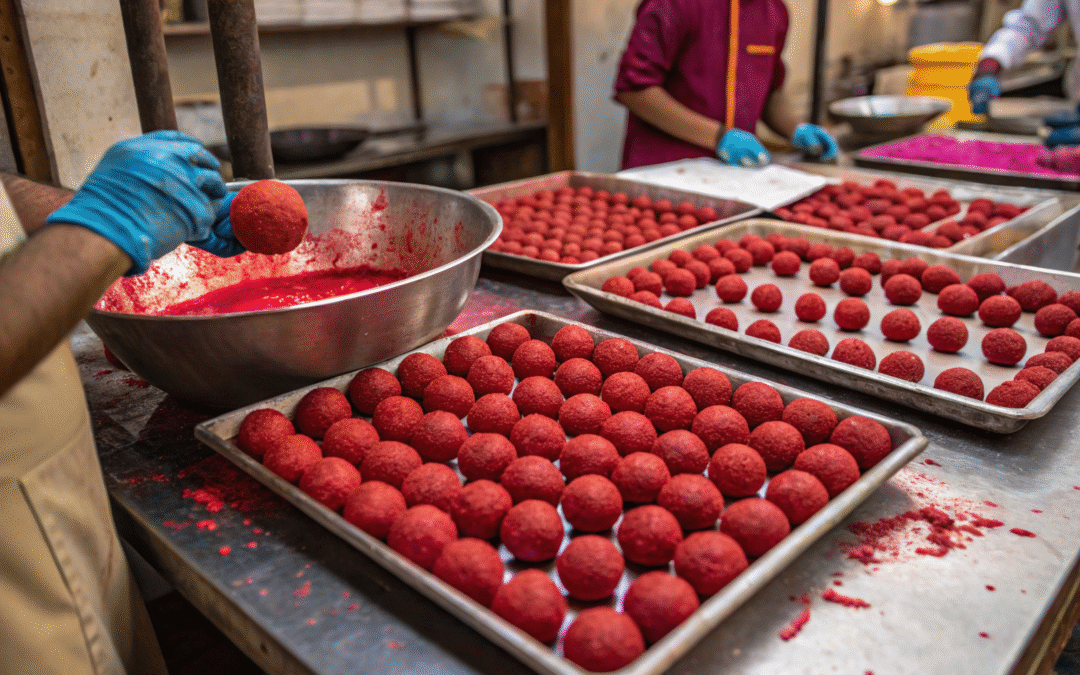


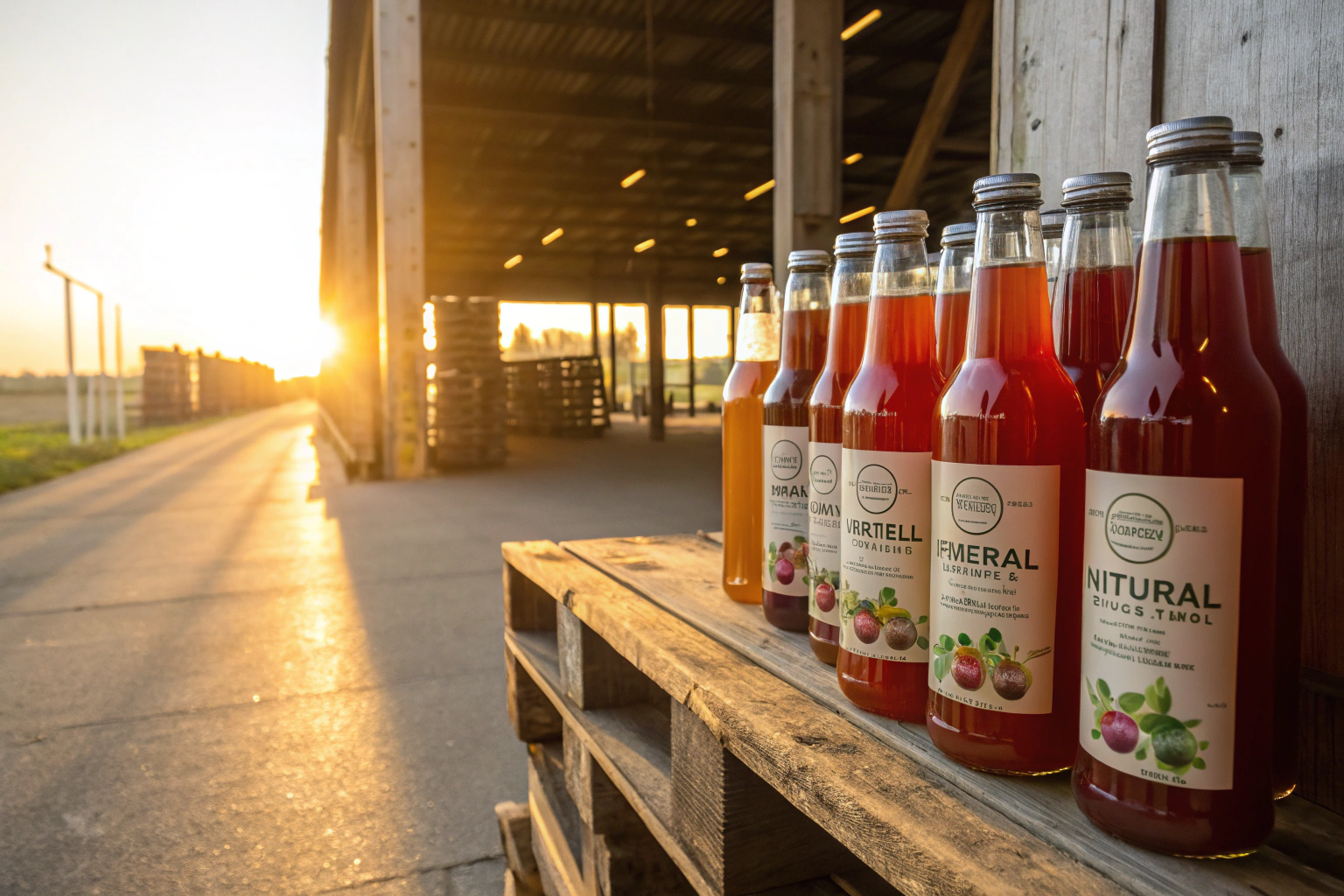

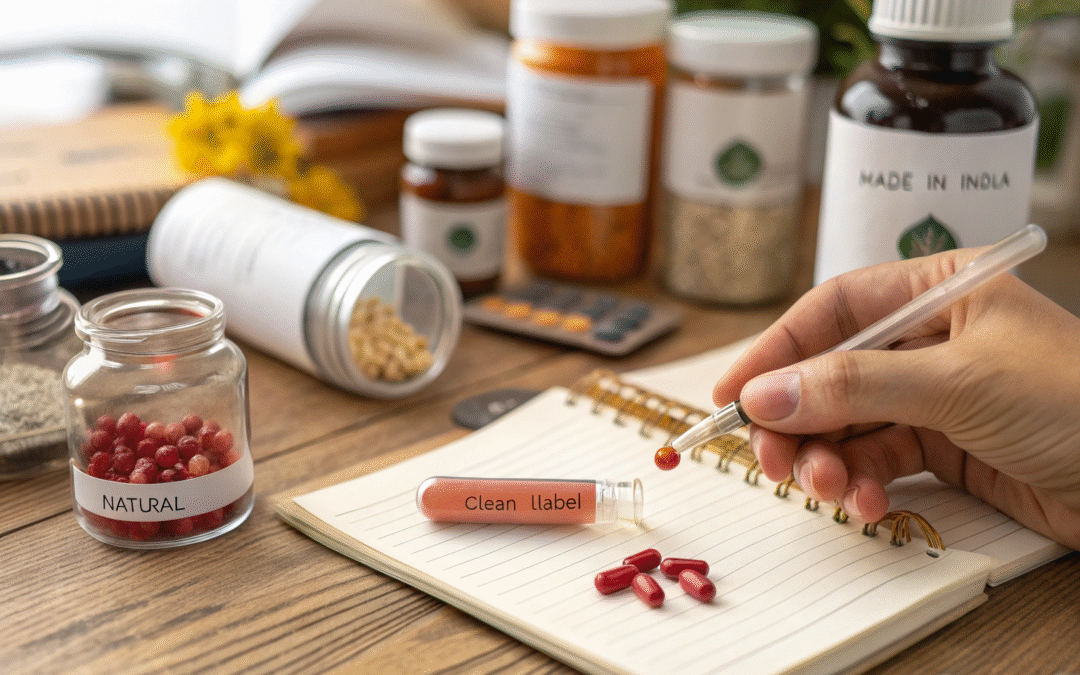
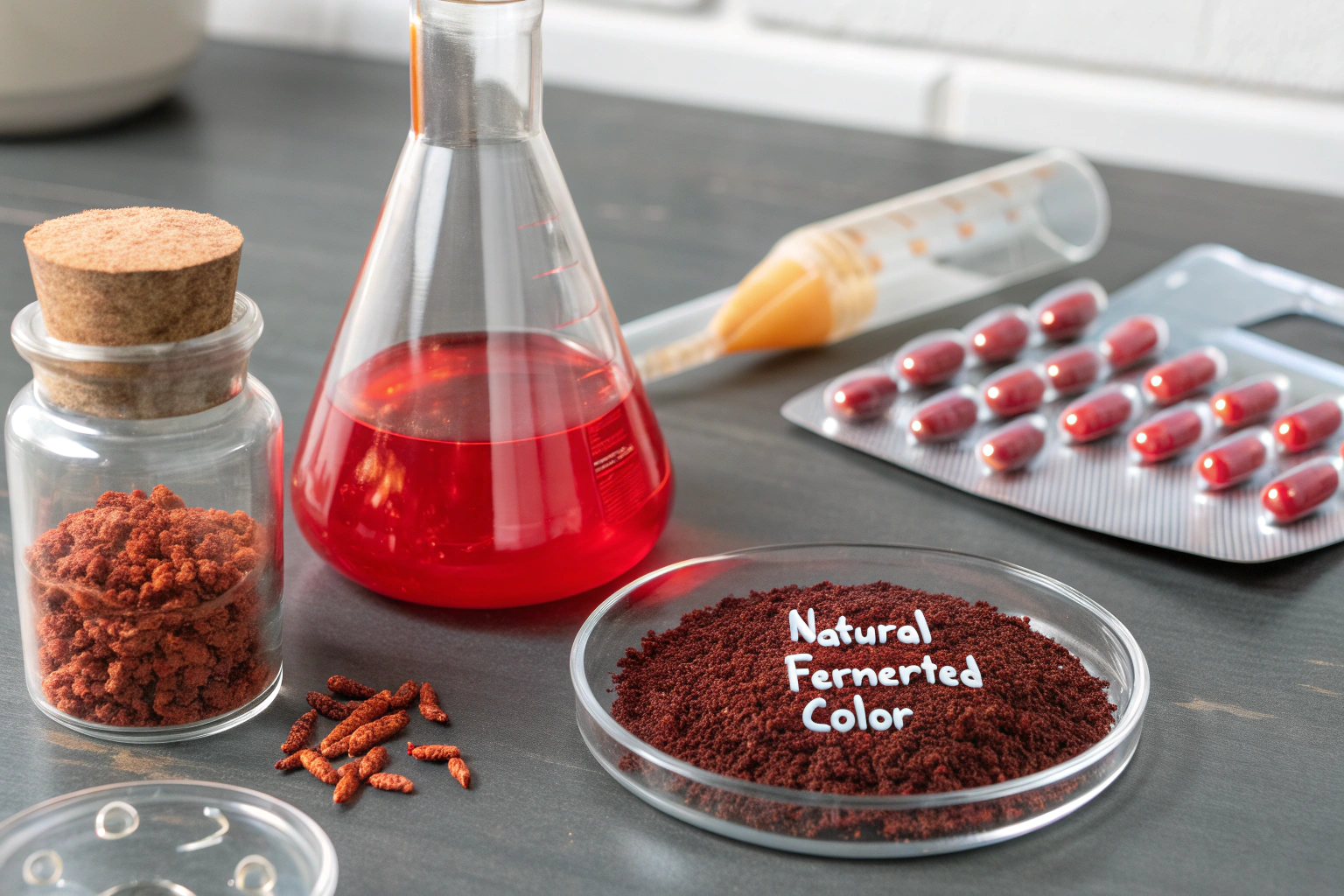
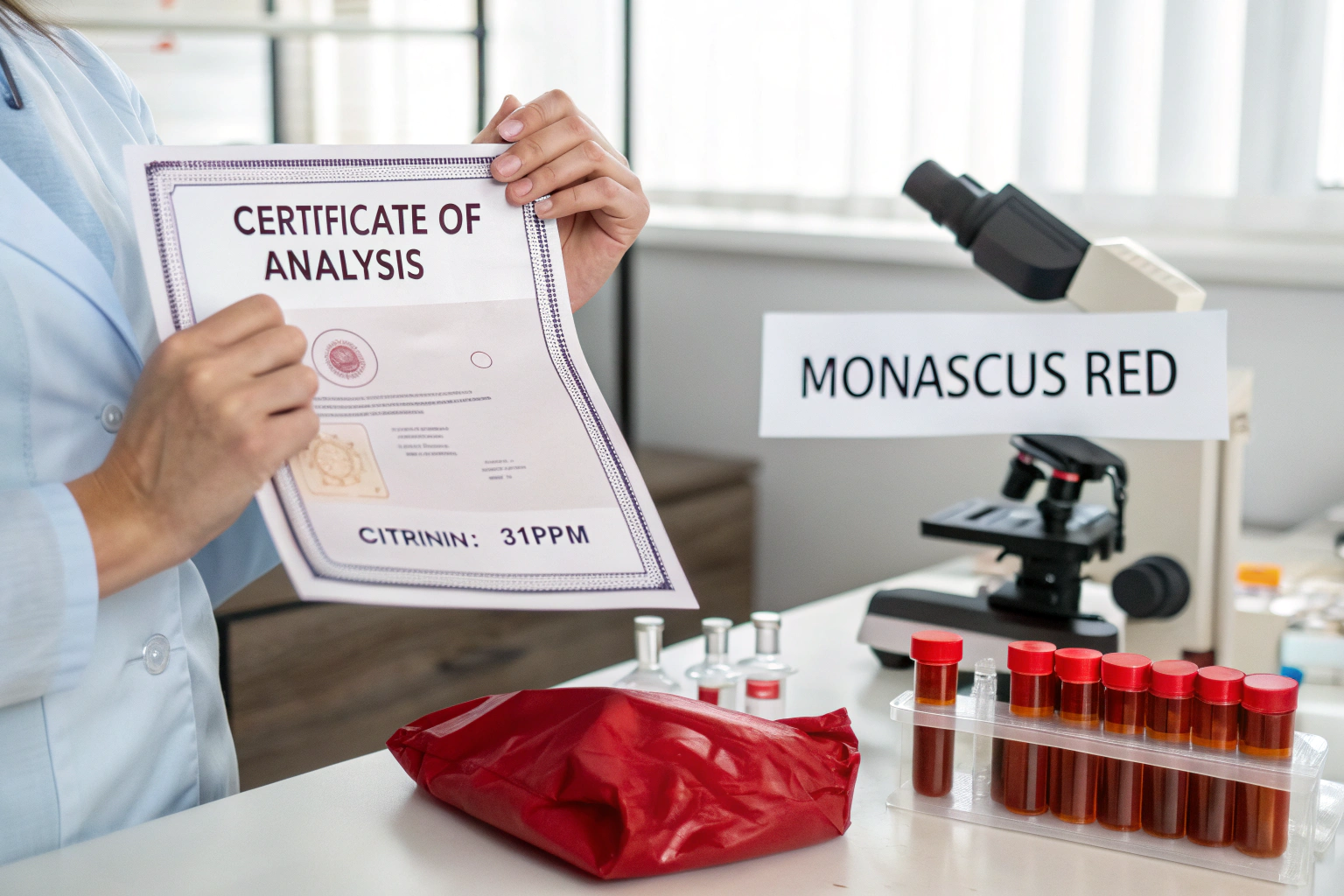
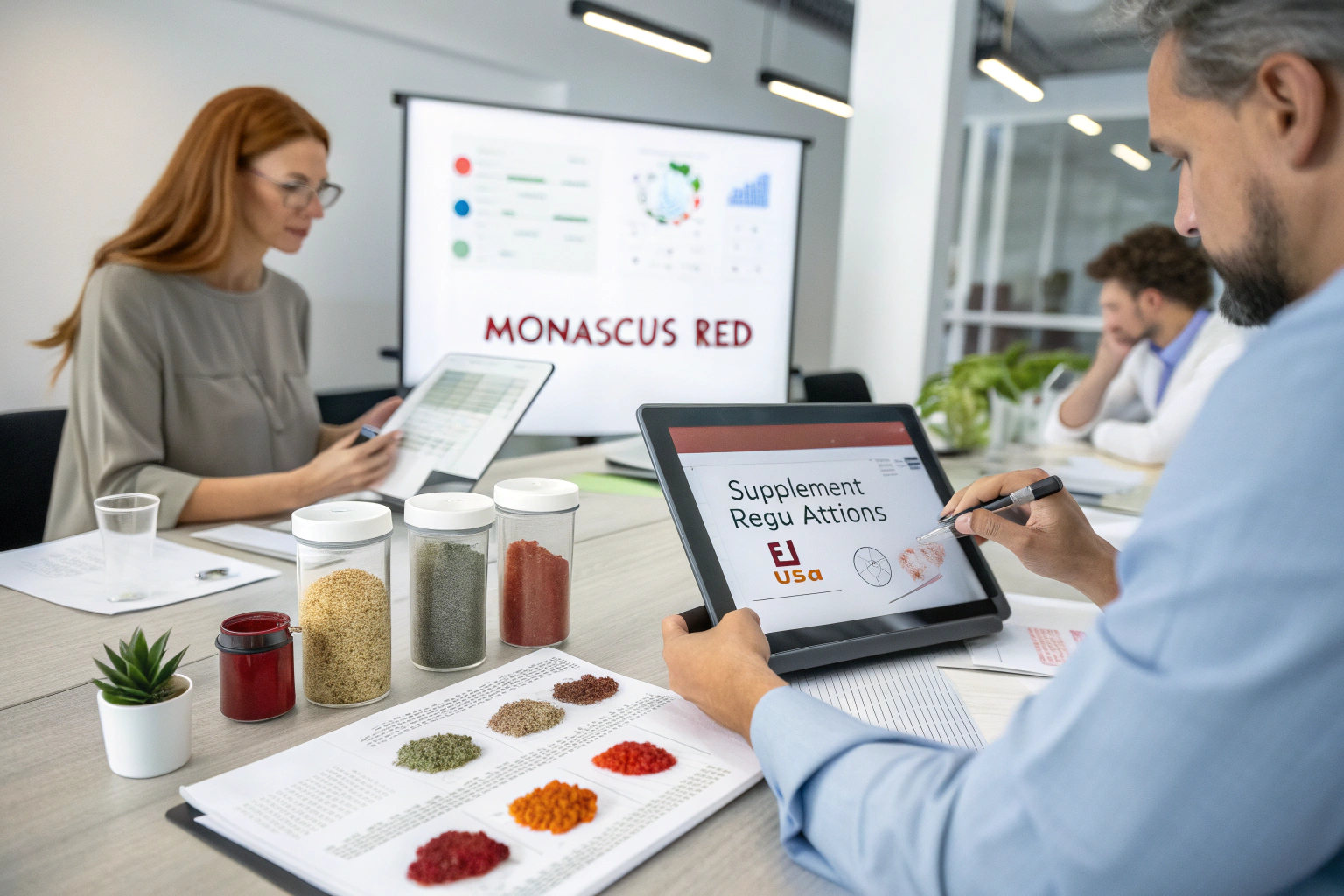
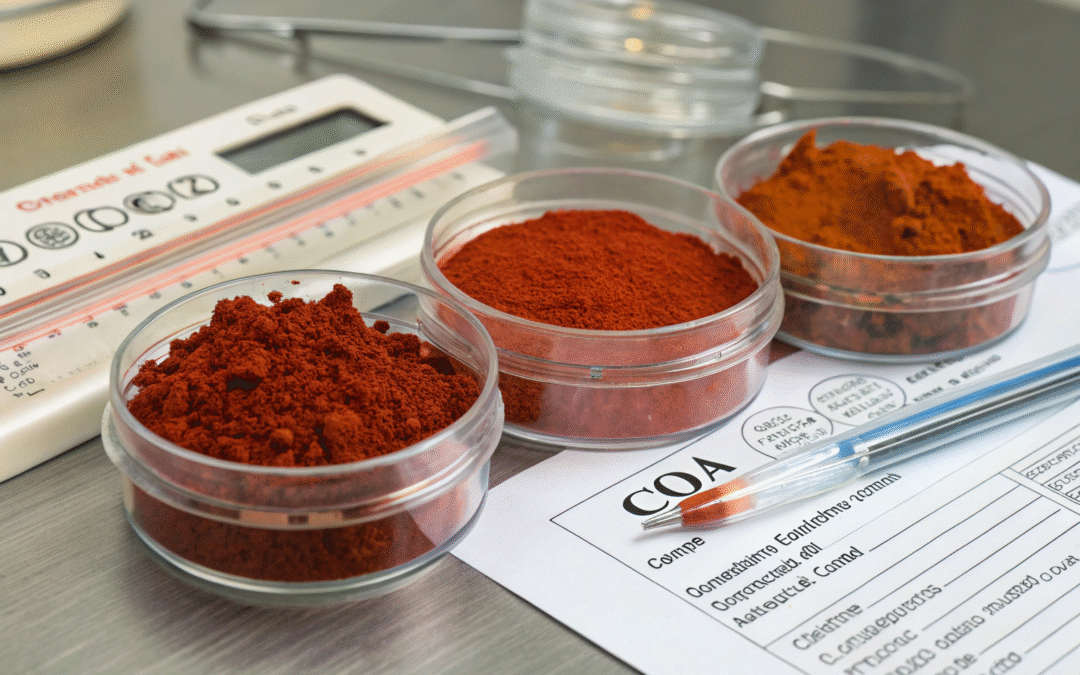
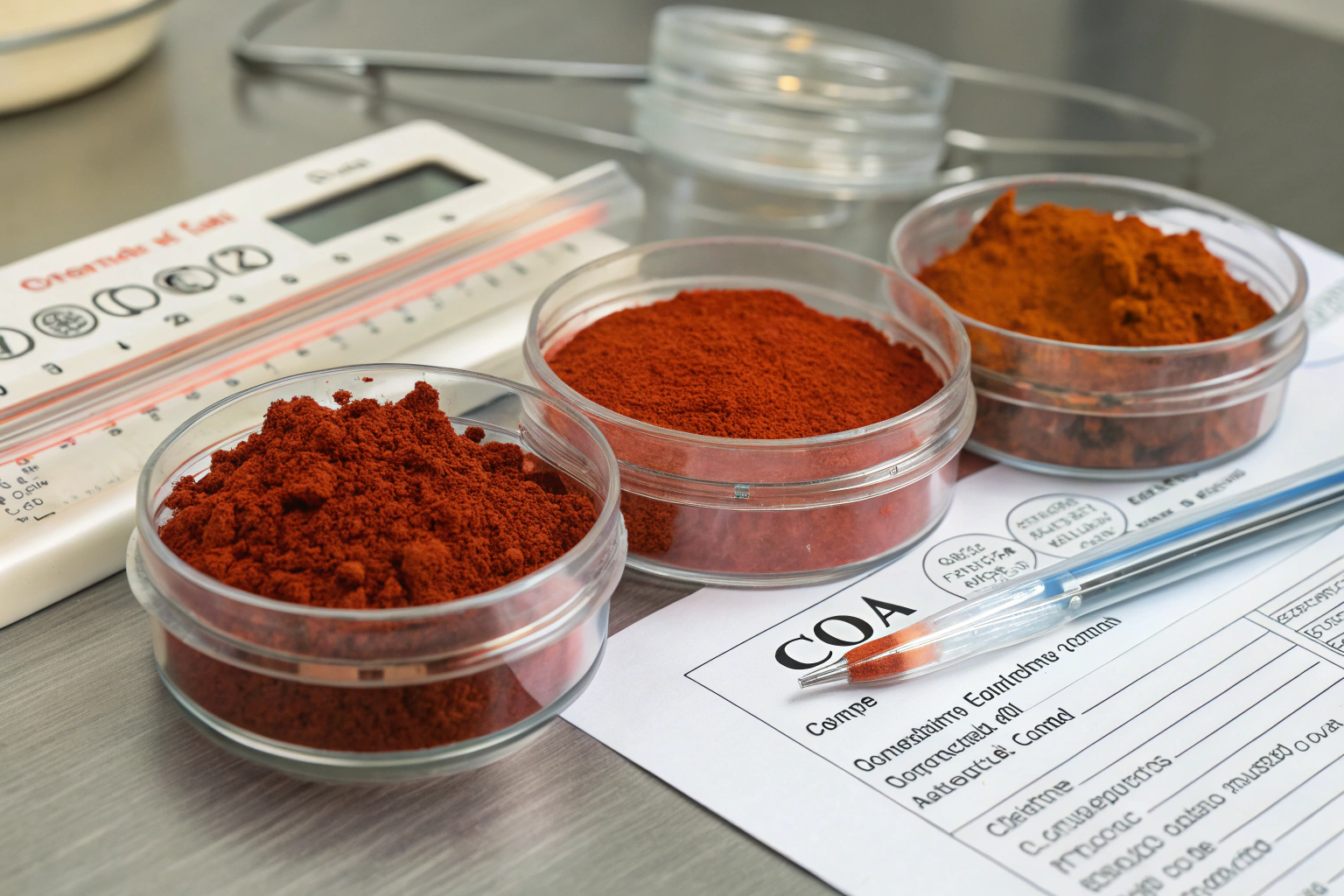
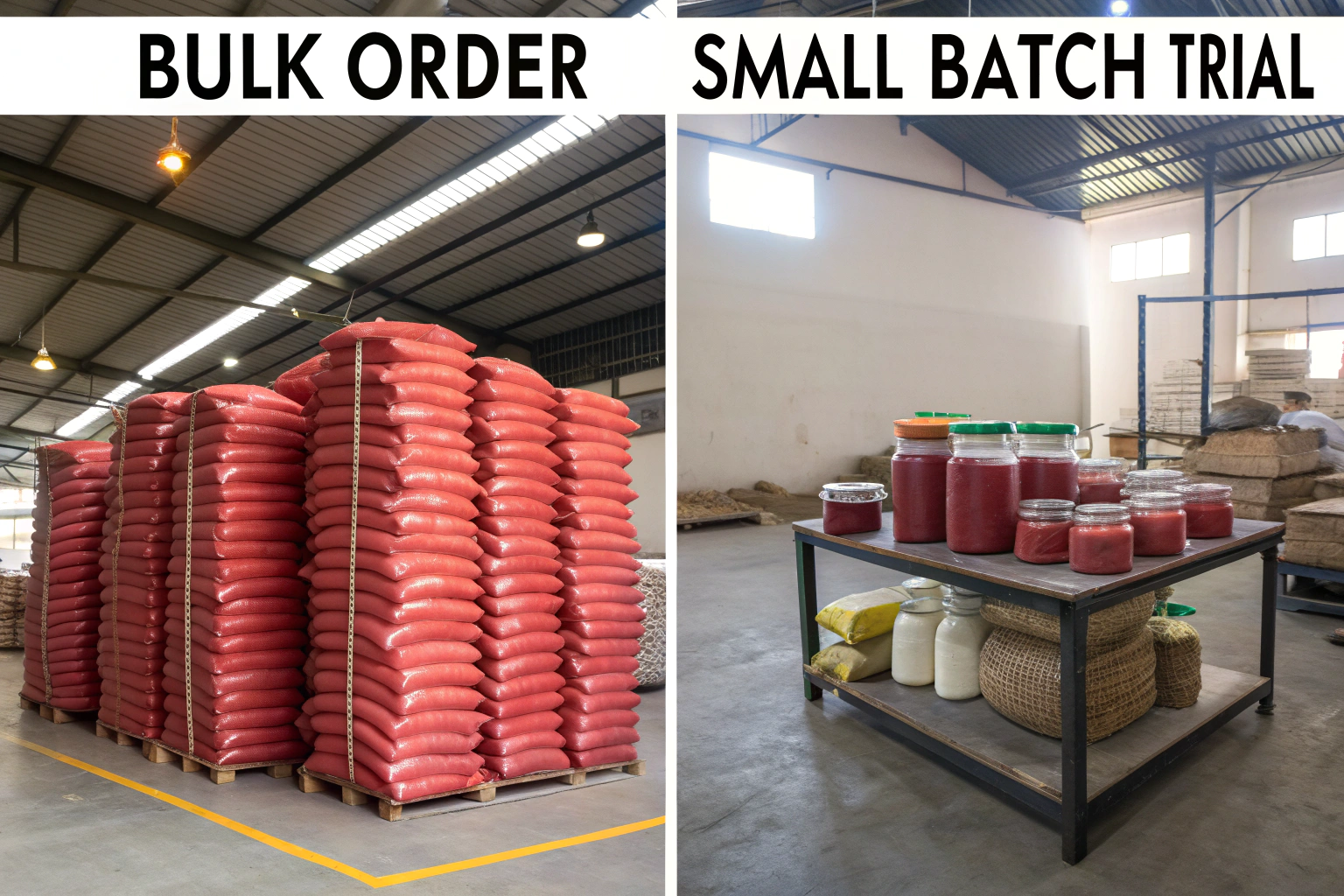
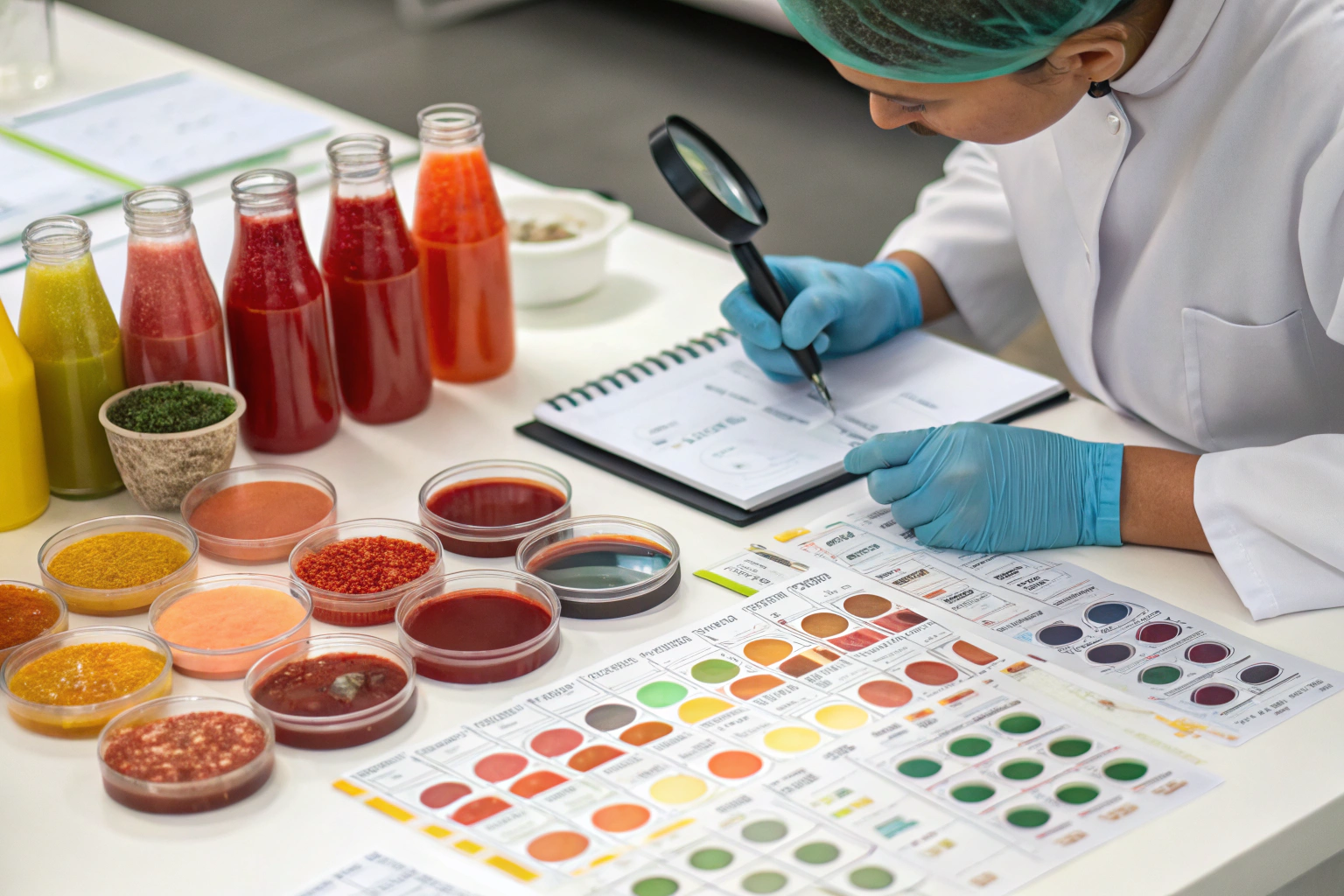
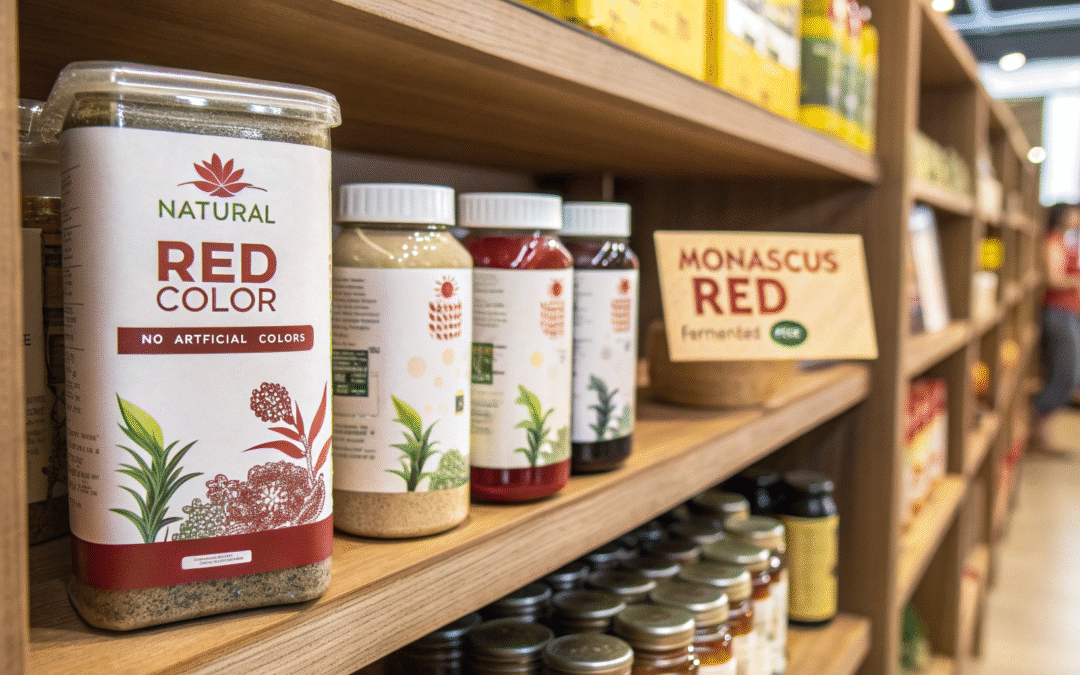
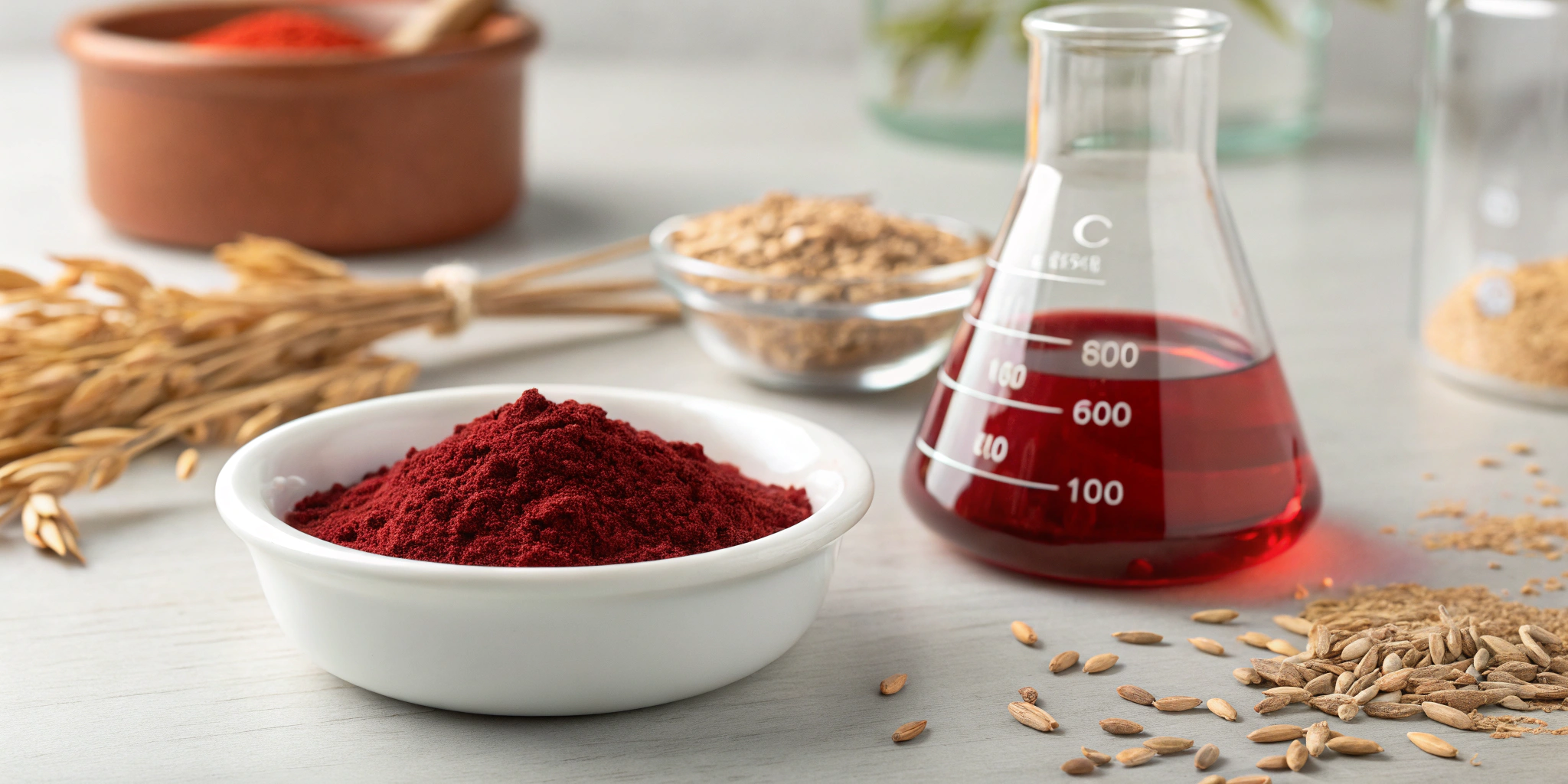
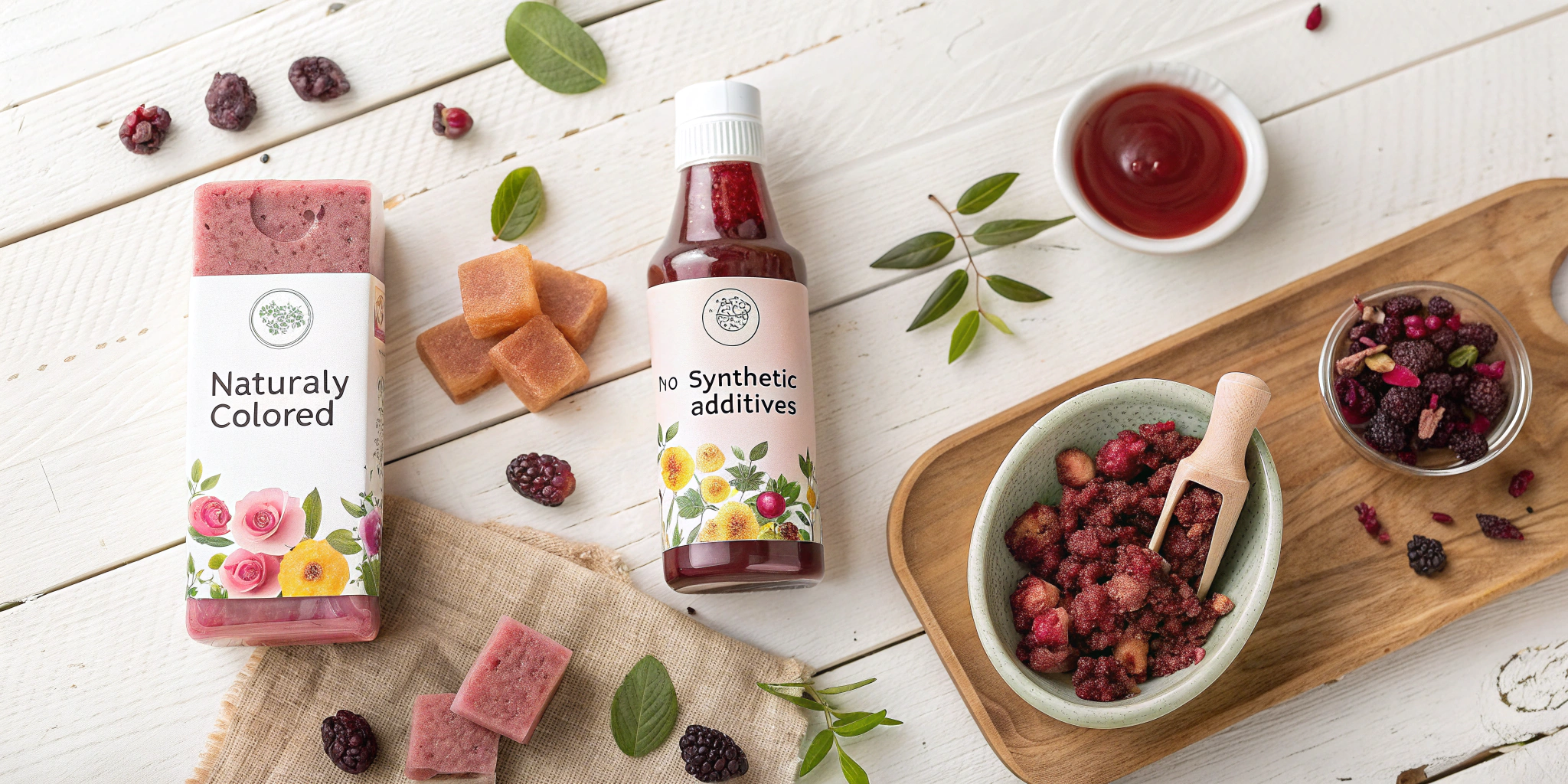
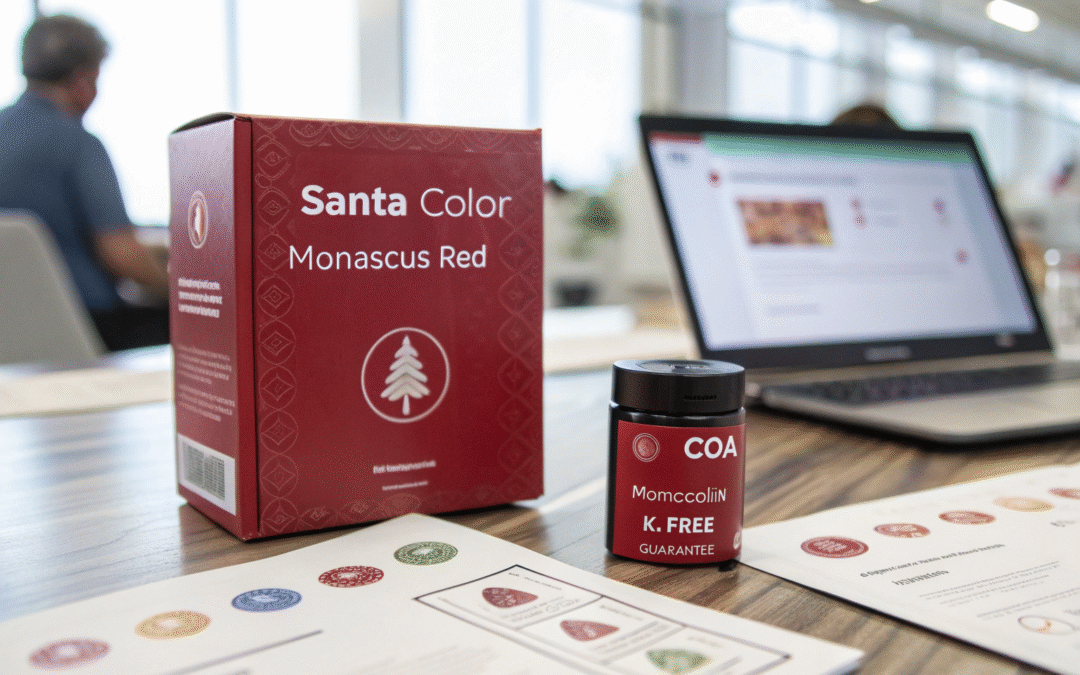
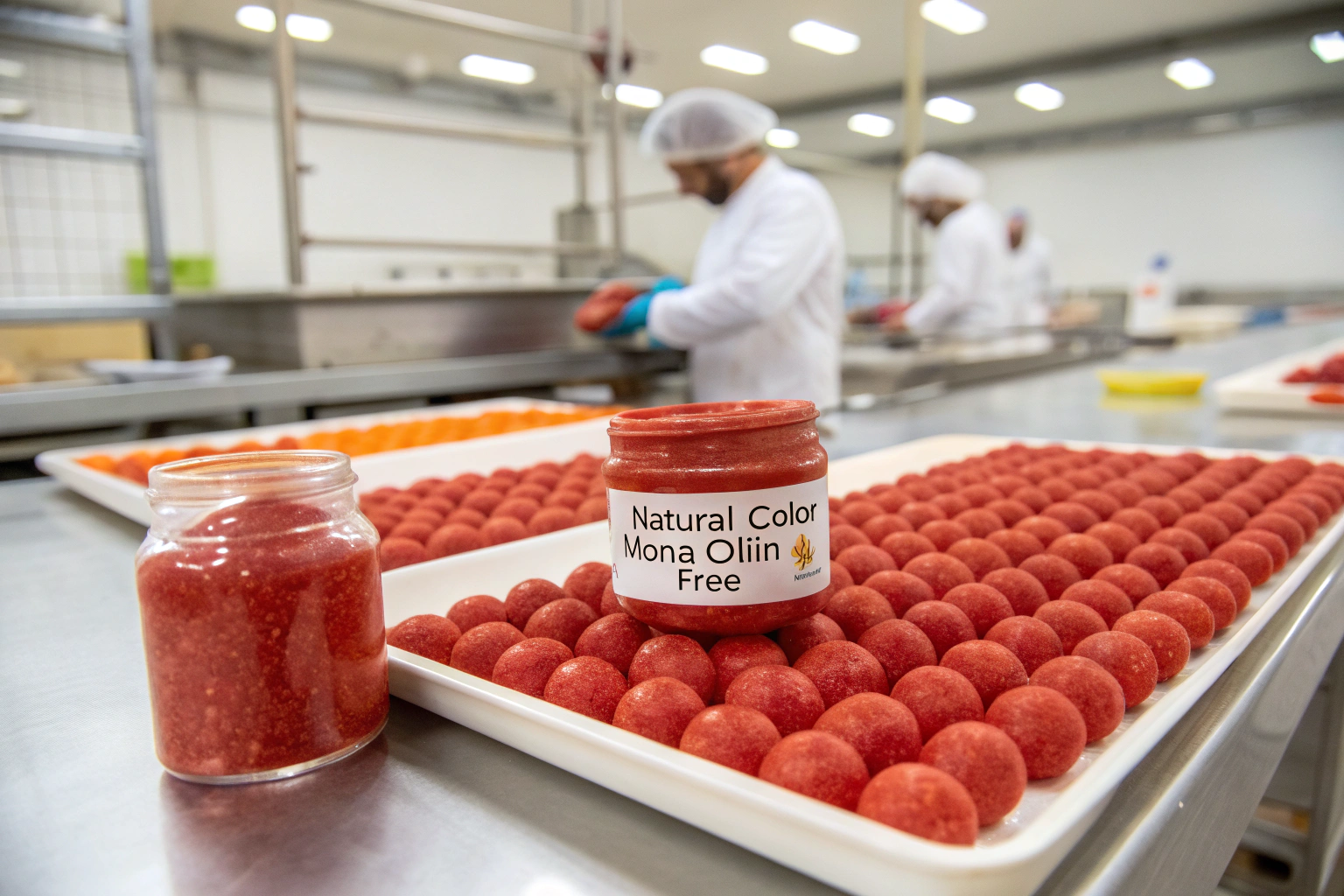
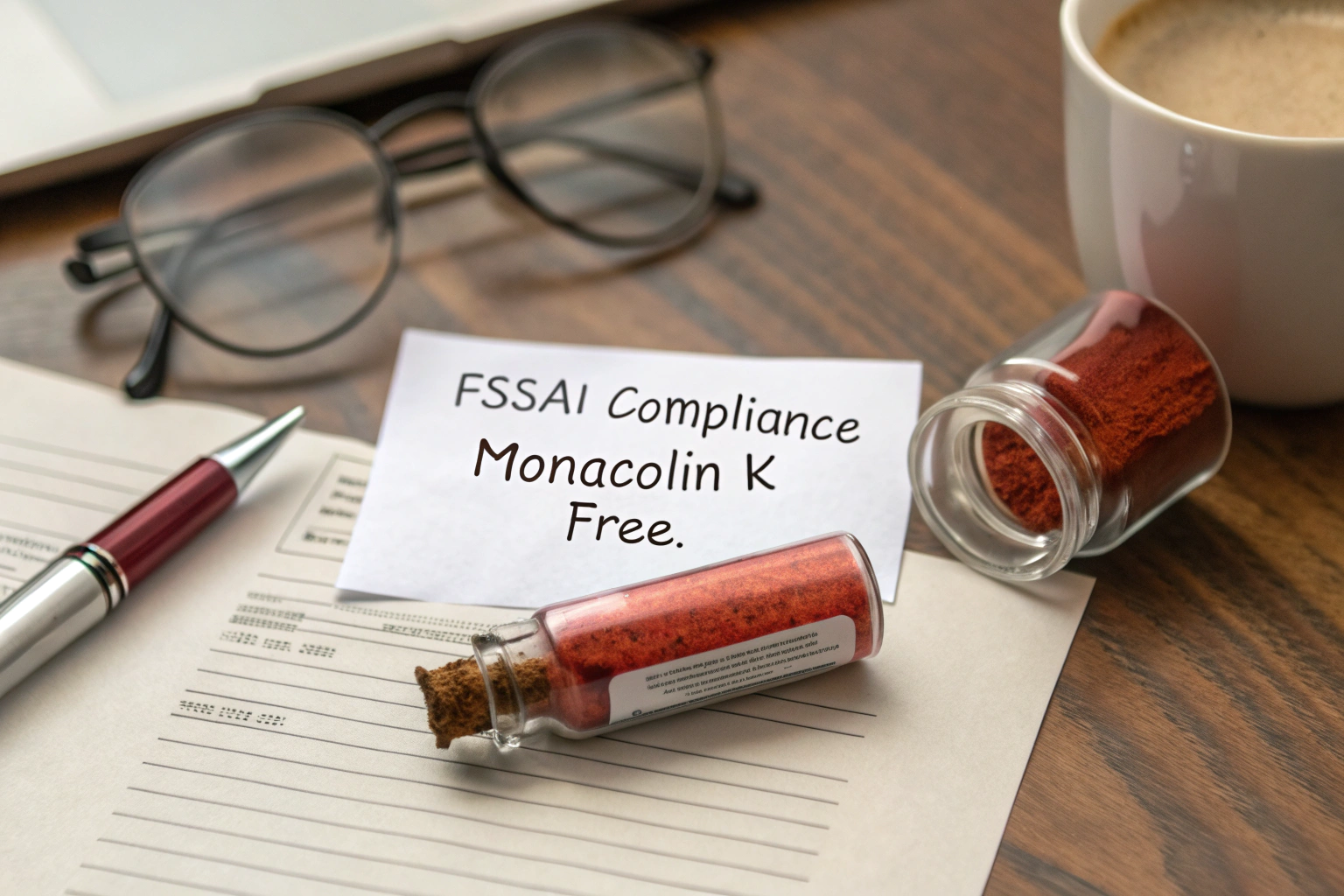
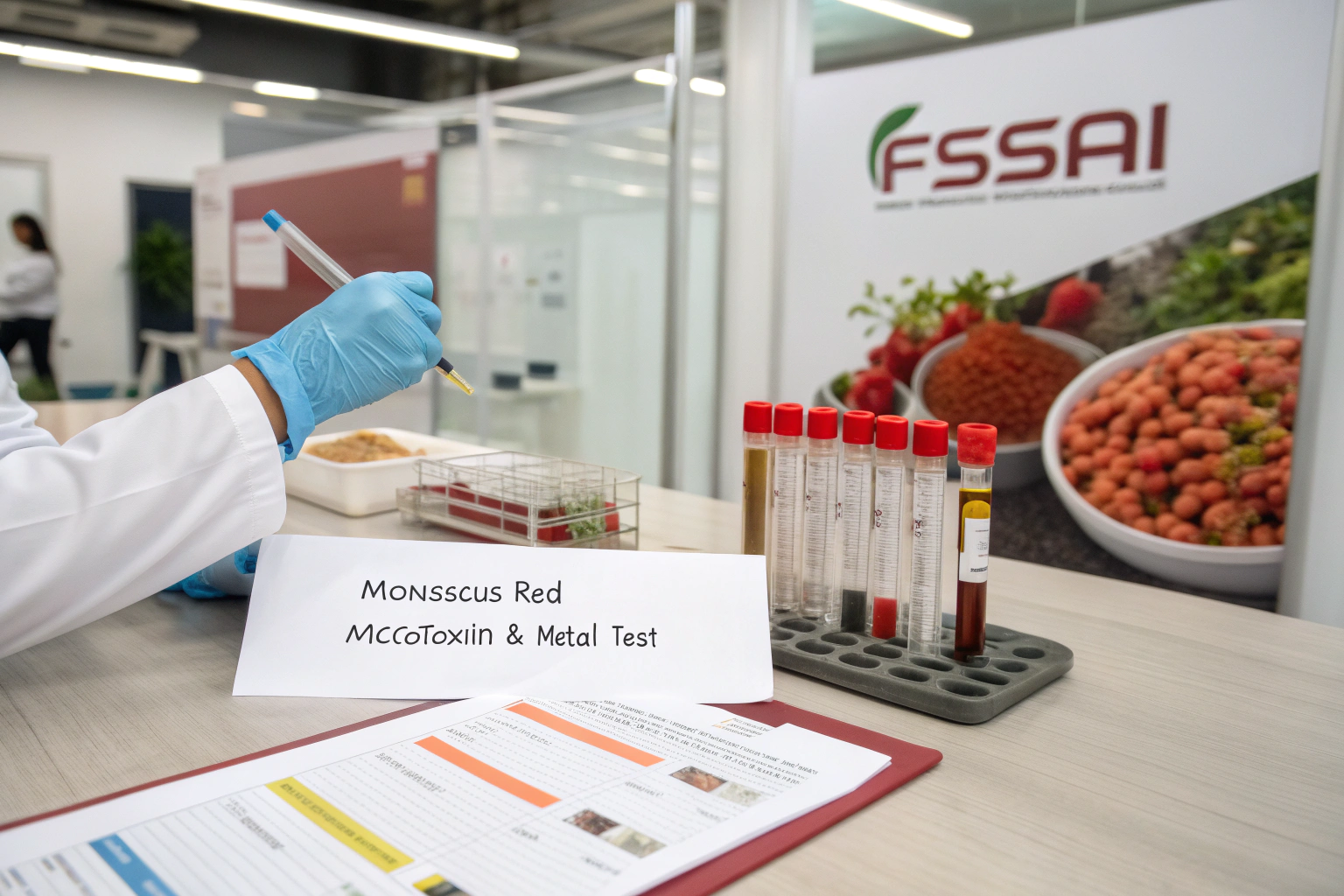
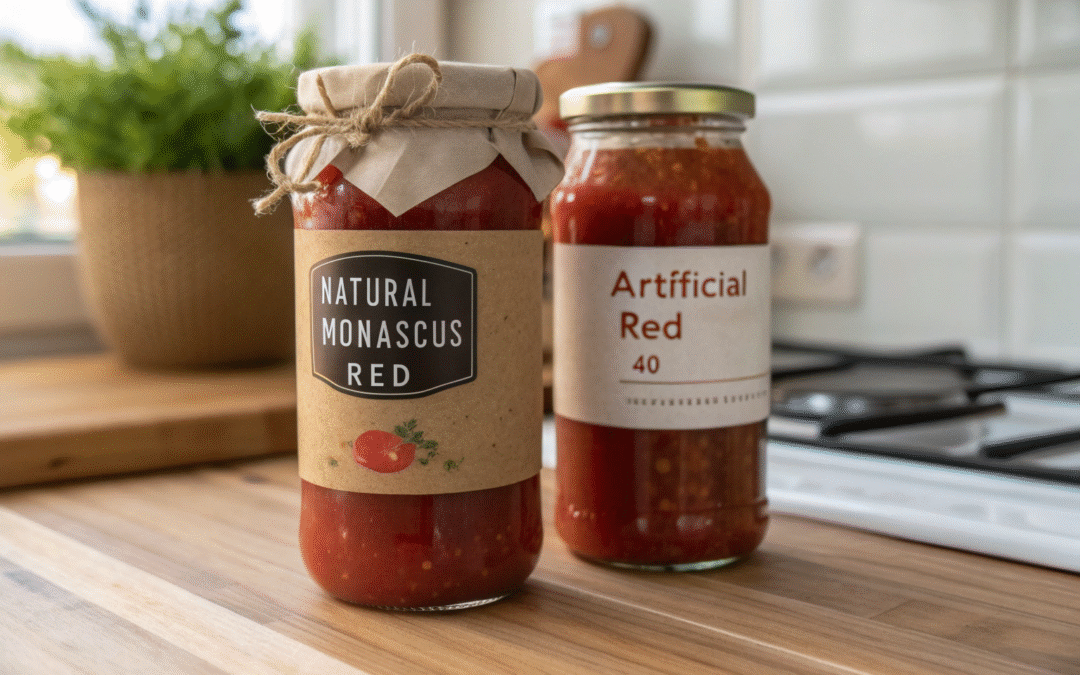
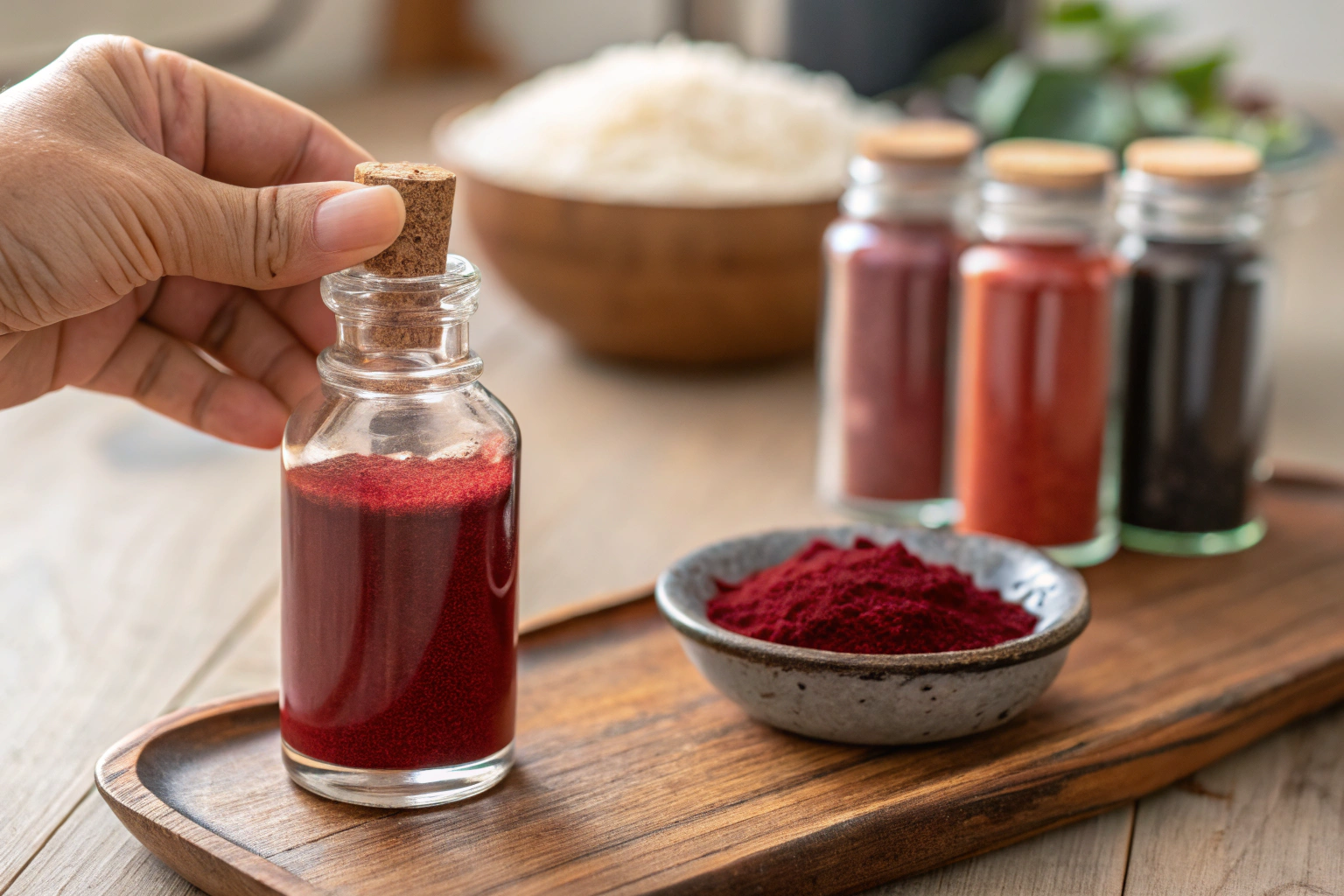
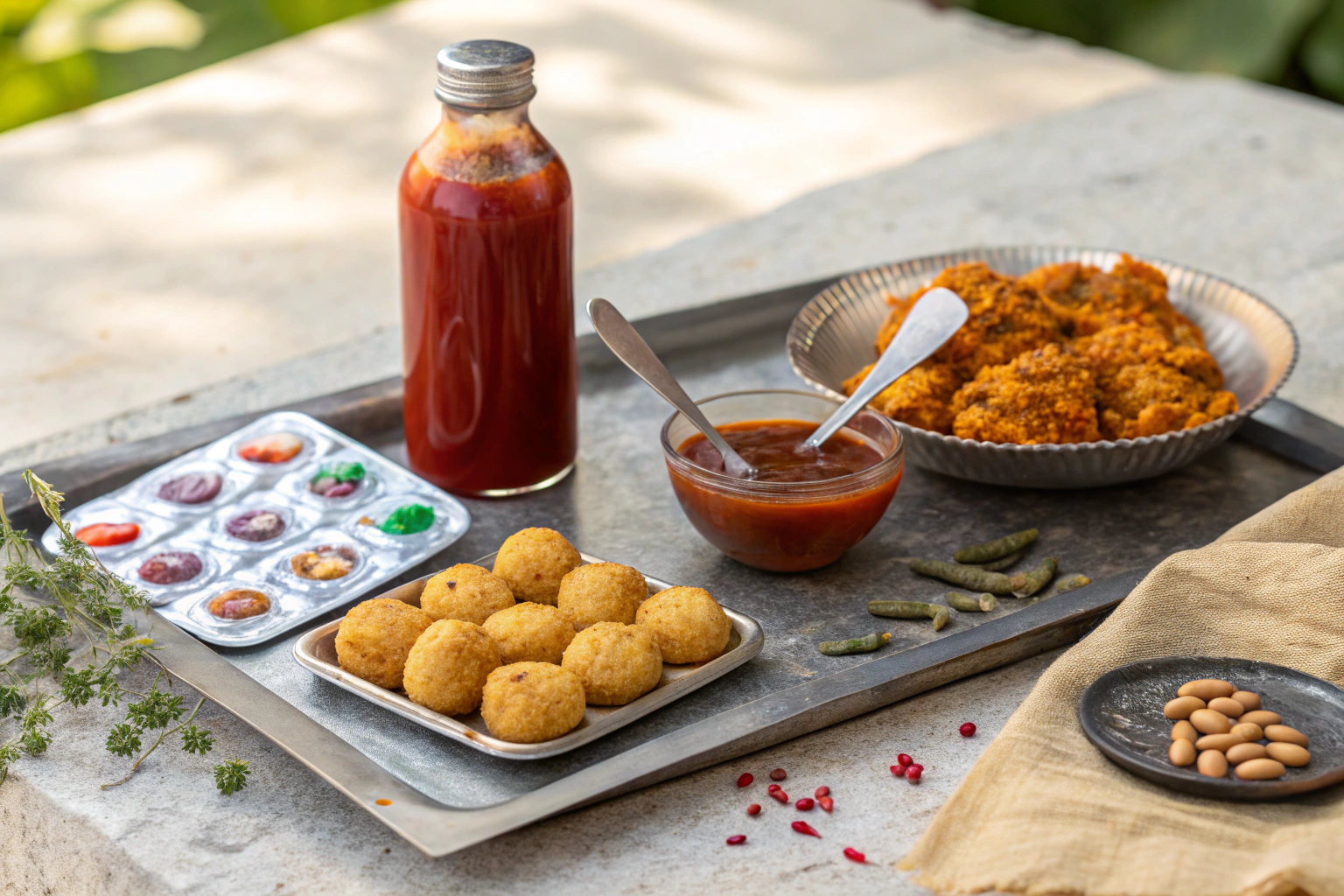
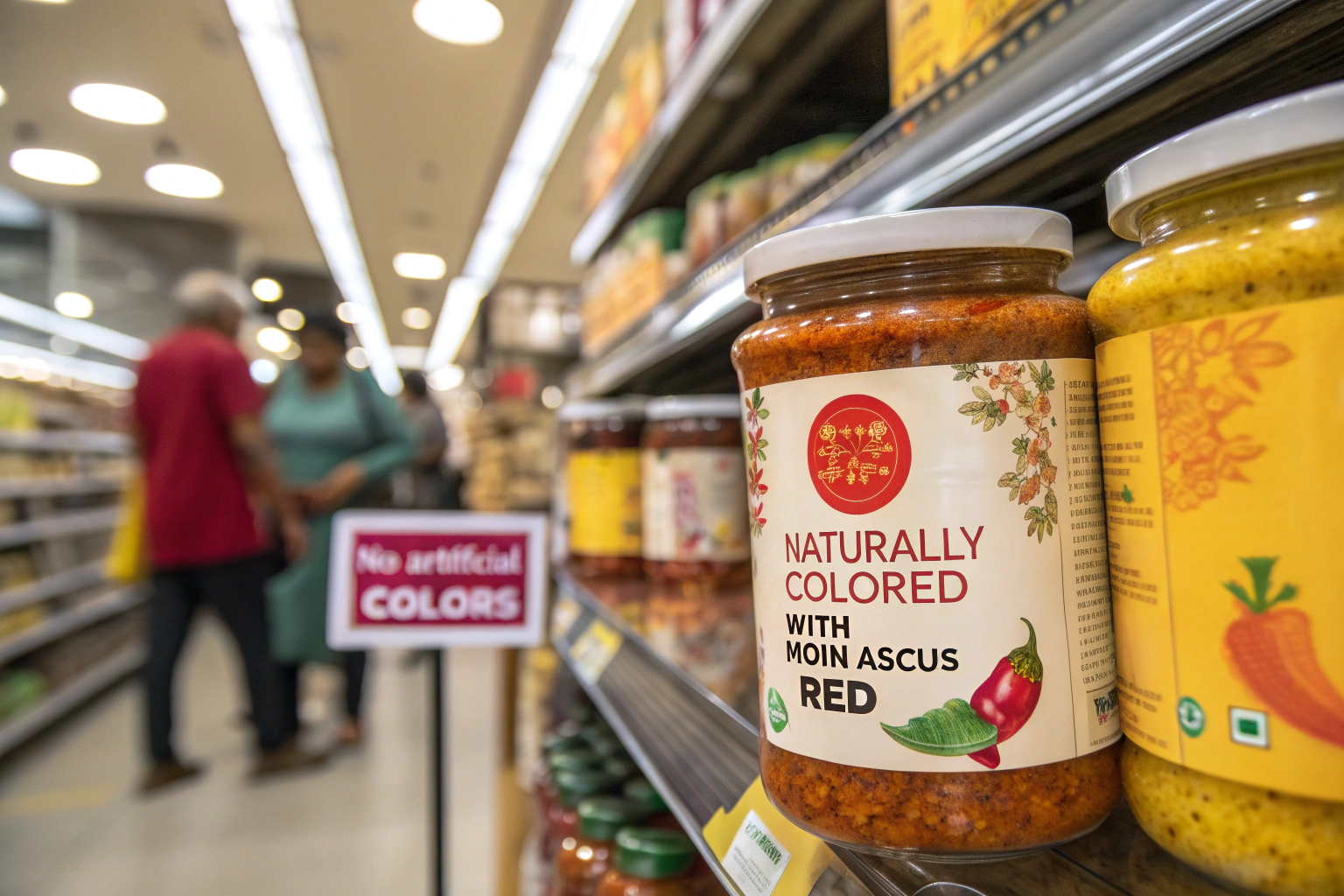

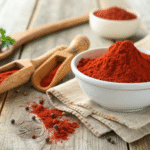
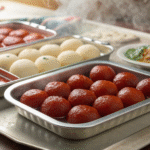
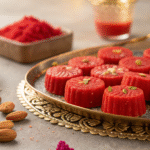

Recent Comments